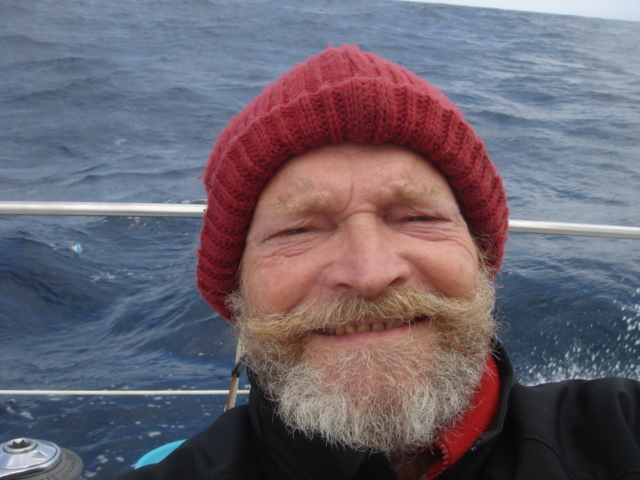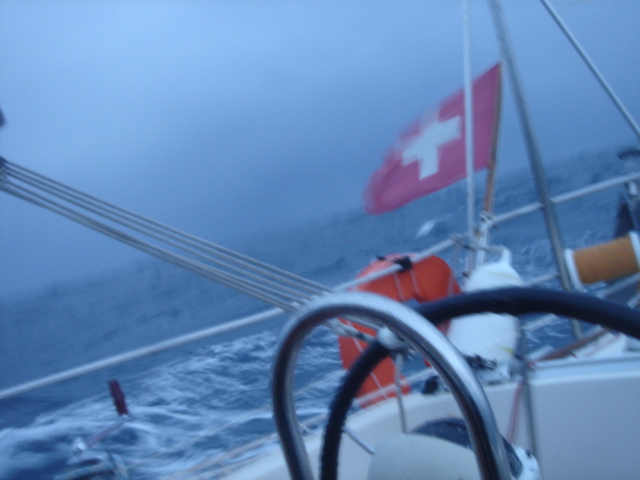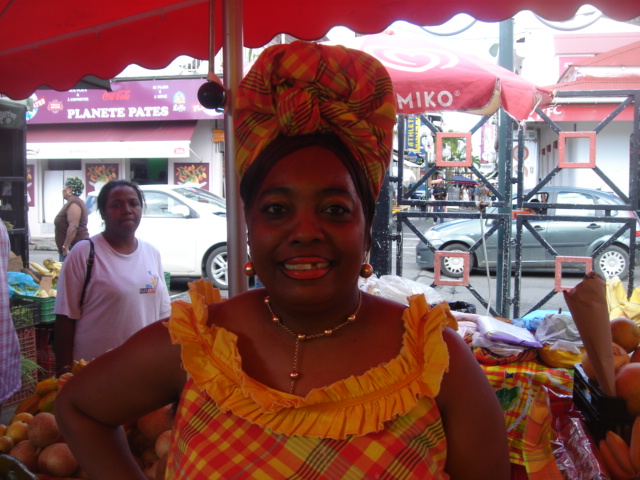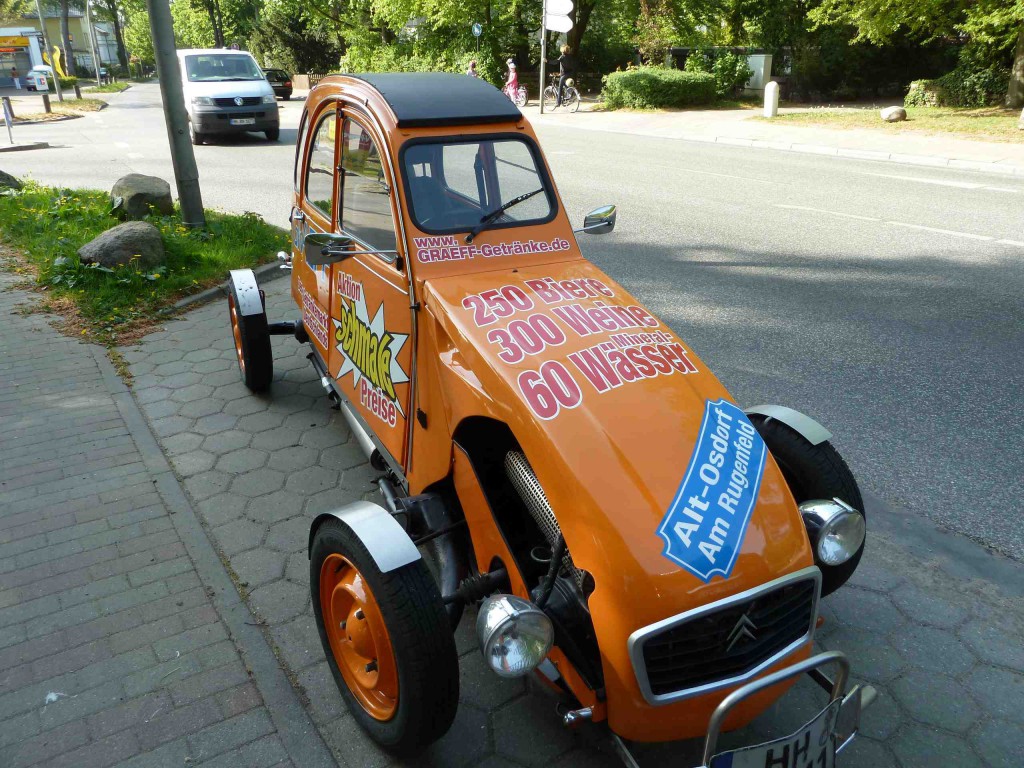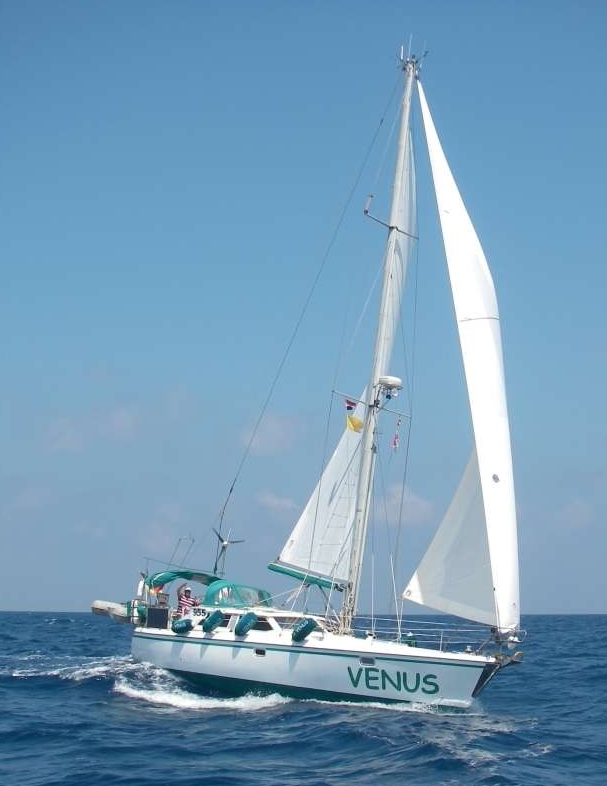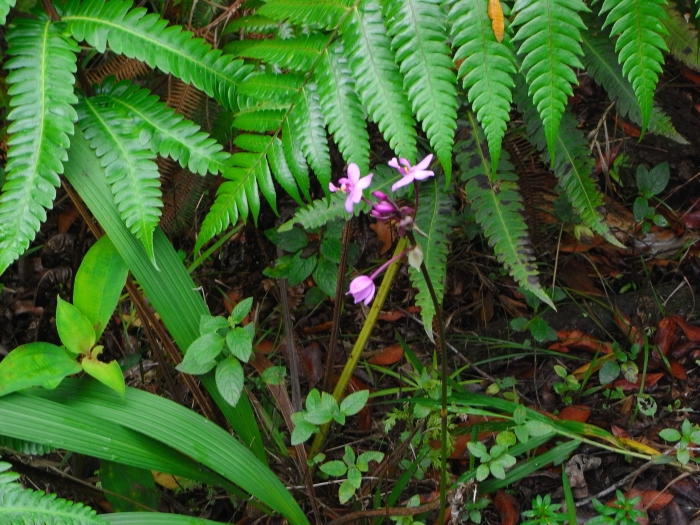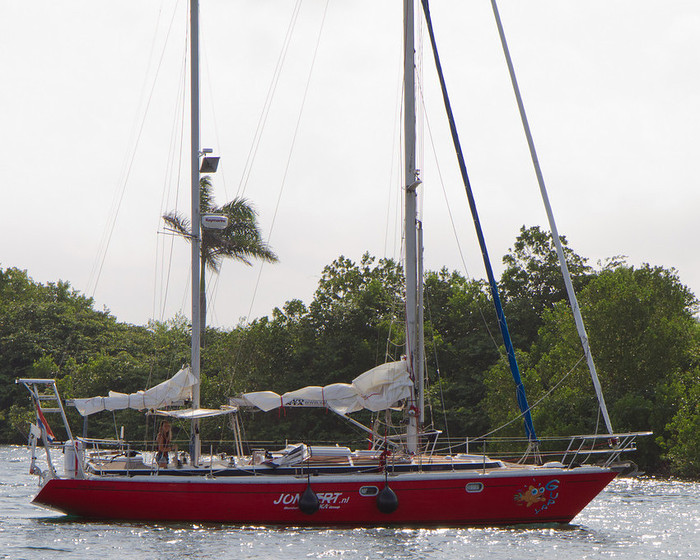Music by Lenine Vieste ( Ivan Lins )
Bernard Moitessier Tribute to the Seas and a renowned yachtsman
Downsizing in Germany
SV Falco, Sabrina +Pascal Heim CH
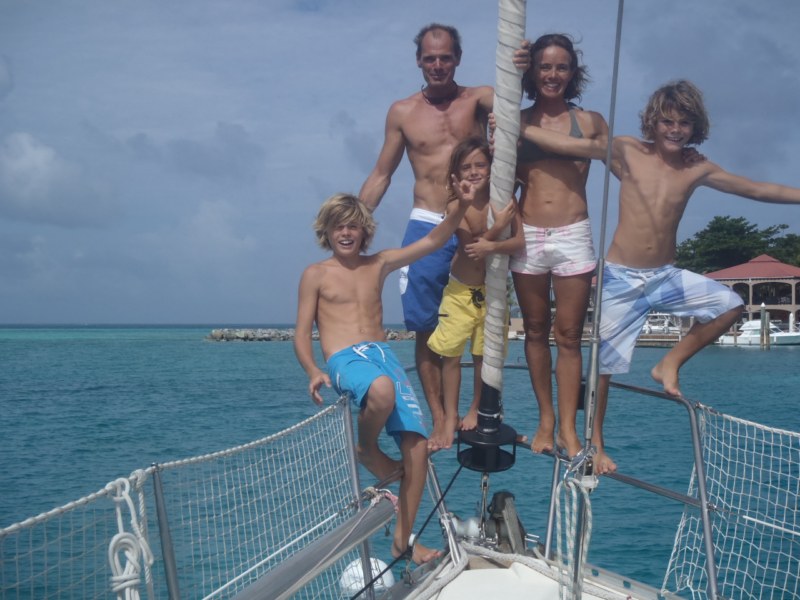
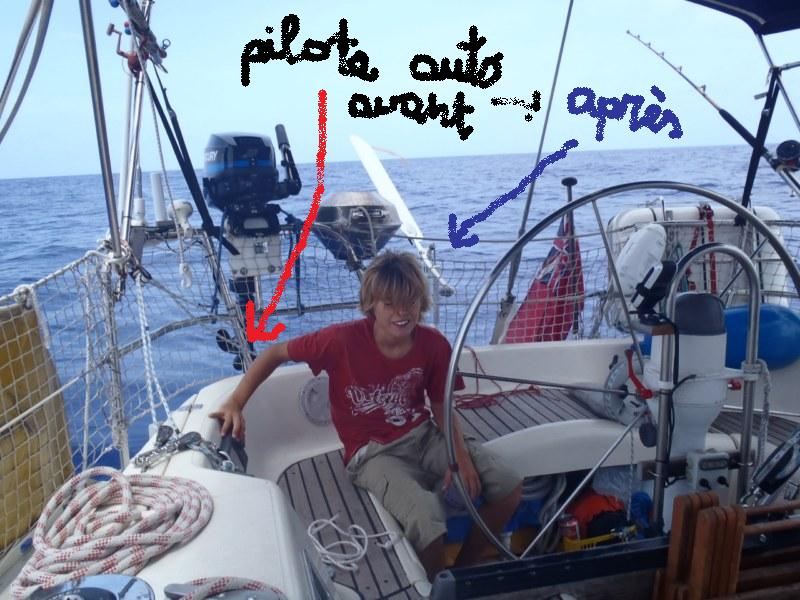
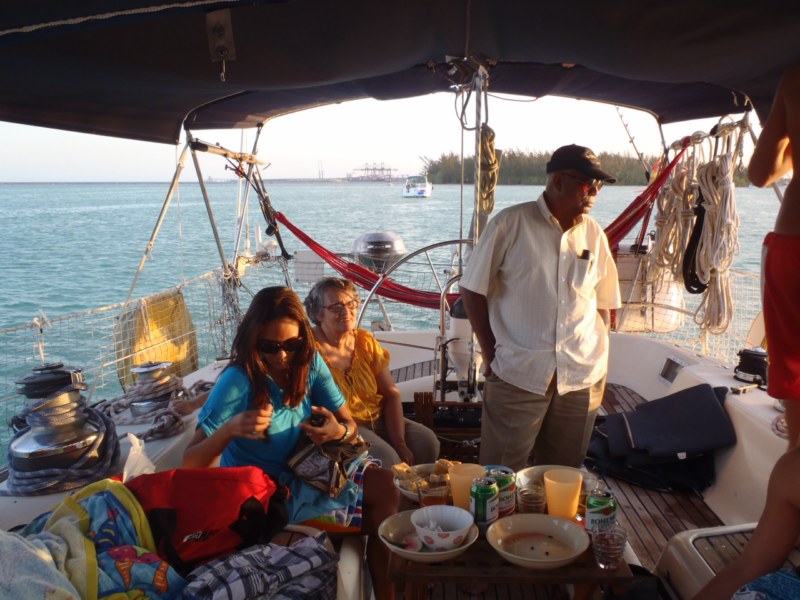
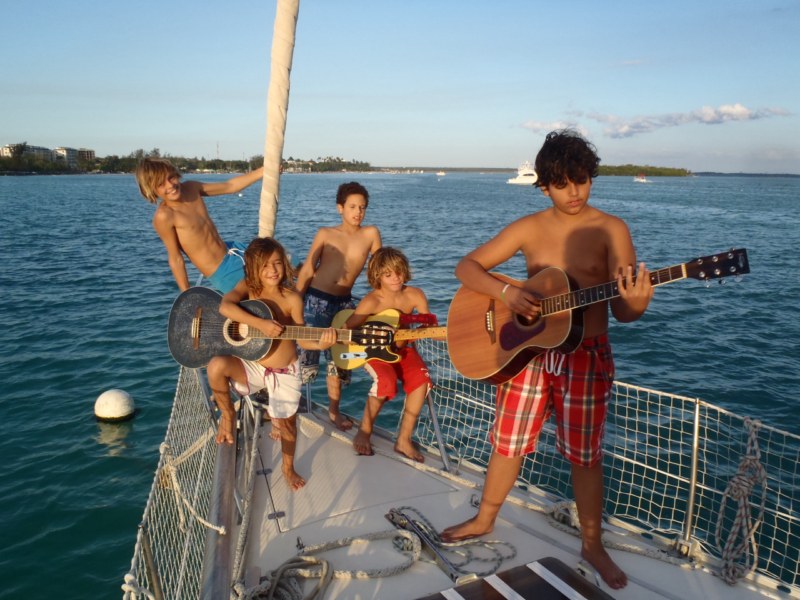
 Le voyage c’est le partage. Le partage d’un projet, d’un vécu, de cultures et d’aventures.
Le voyage c’est le partage. Le partage d’un projet, d’un vécu, de cultures et d’aventures.
Nous sommes en voyage pour 2 ans. Départ, 6 septembre 2009 de la Suisse avec notre voiture. Première étape Valencia le 7 septembre 2009 où nous avons progressivement pris possession de notre voilier. Deuxième étape prevue, Gibraltar pour mi-octobre…et bien, c’est raté! Falco a eu besoin de quelques soins supplementaires! Le 1er décembre 2009 tout était prêt et nous avons largué les amarres.Nous avançons au rythme de la météo et attendons à la Costa del Sol que le fameau anticyclone des Açores regagne sa place en Atlantique pour passer sur les Canaries. La richesse des évenements, des échanges et de la solidarité entre les navigateurs nous a glissé dans ce nouveau monde, peu à peu. Et nous voilà maintenant prêts à franchir les prochaines étapes: Gibraltar, Canaries. La grande Traversée, Caraïbes et de mouillage en mouillage la route se dessinera sur nos cartes en fonction du temps, des envies et des surprises que cette aventure va nous reserver.
![P6060390 [800x600] Kopie](https://windpilot.com/blog/wp-content/uploads/2011/06/P6060390-800x600-Kopie.jpg) SV Falco est une Jeanneau Trinidad 48, SVP suivre le blog de la famille
SV Falco est une Jeanneau Trinidad 48, SVP suivre le blog de la famille
SV Rubicon, Susanna + Jürgen Mohrmann GER
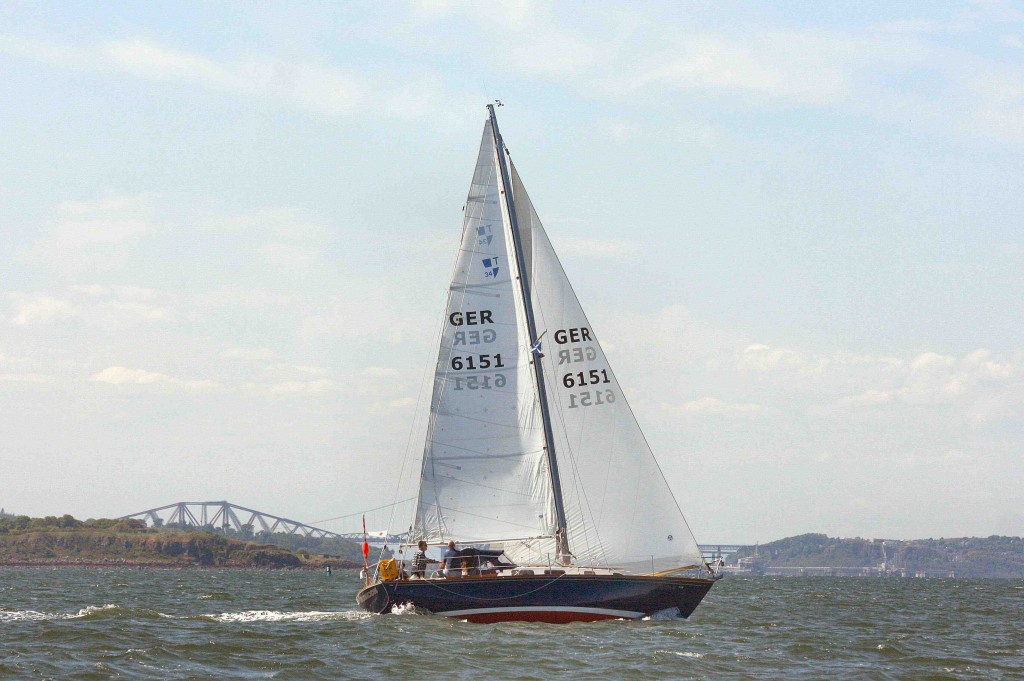
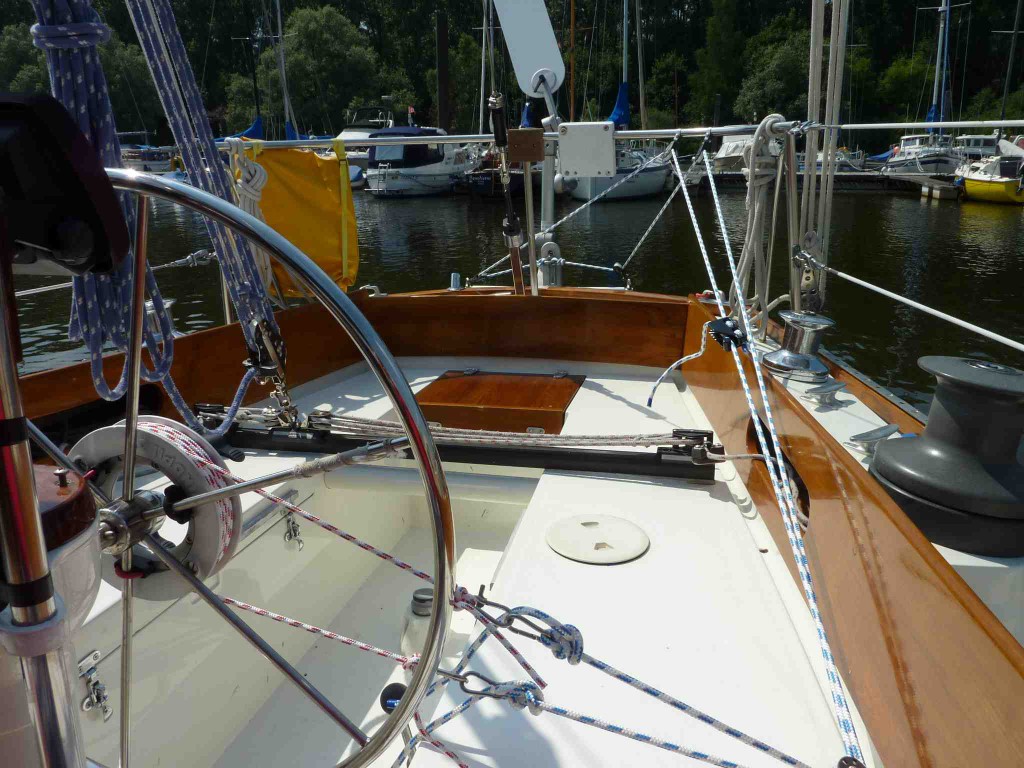 Jürgen anchors SV Rubicon in Carlisle Bay, Barbados, after nearly a month on the Atlantic.
Jürgen anchors SV Rubicon in Carlisle Bay, Barbados, after nearly a month on the Atlantic.
Jürgen left Hamburg July 6, 2010Hamburg
to Barbados & Beyond
A Tartan’s Tale
Two sailors sit, becalmed, in the middle of the ocean on their 34-foot sailboat. Worried that provisions, water, and fuel will run out before the trade winds return, they are halfway between the Canary Islands and their destination, Barba- dos. What brought these two friends here? Natives of Hamburg, Germany, Jürgen Mohrmann and his long-time sailing friend, Gerhard Peters, are sail- ing Hull #1 of the Tartan 34 Classics, an Olin Stephens’s design with 43 years of sailing under her keel.
Here ist the full story about how the TARTAN 34 hull number #1 converted her life to Europe… published by Grace Holt in www.spinsheet.com
SV Donna, Kris Tielemans NED
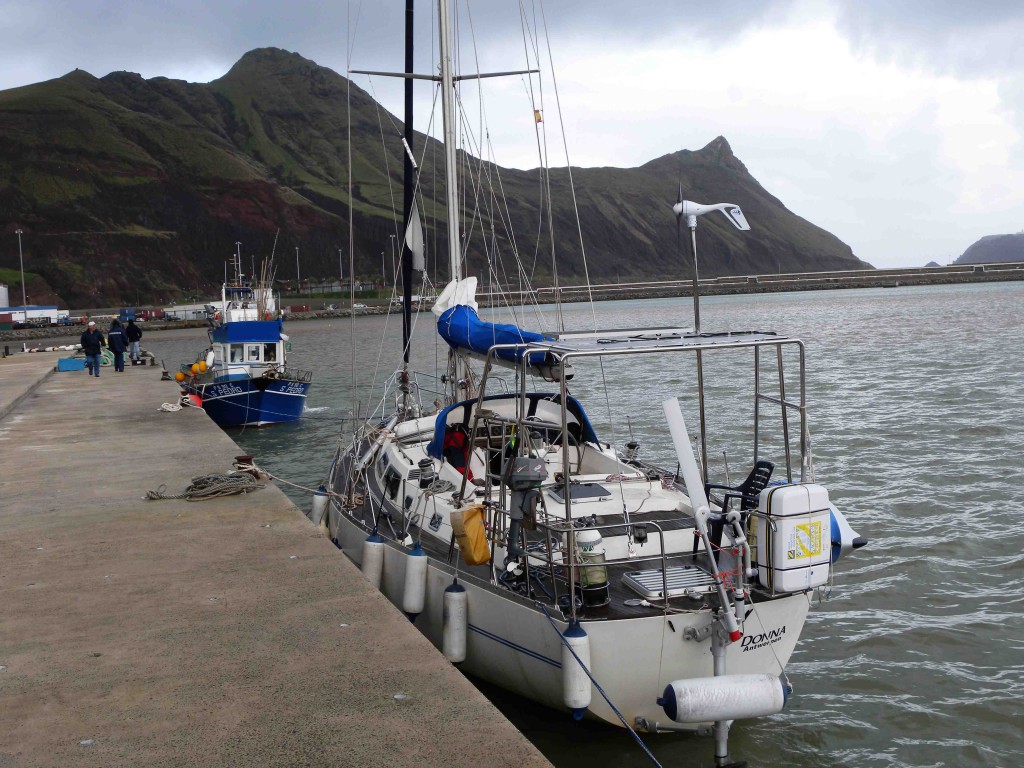
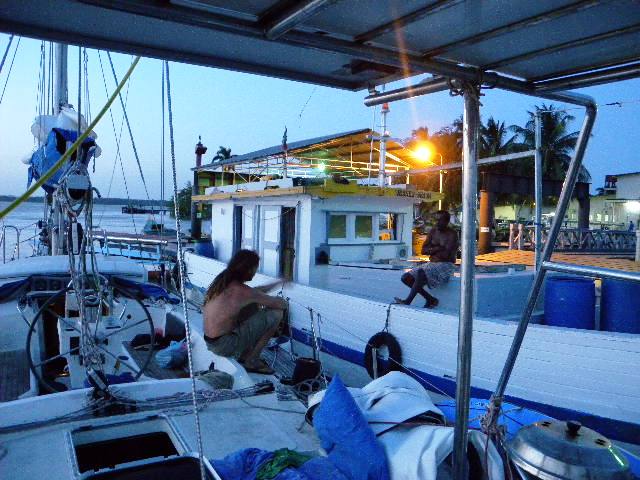 British built MOODY 50 started from her homeport in NED sometime in 2010, proceeded to the MED in the same year, passed the Canaries same autumn and headed West via Cape Verdies to arrive in SURINAME in march 2011.
British built MOODY 50 started from her homeport in NED sometime in 2010, proceeded to the MED in the same year, passed the Canaries same autumn and headed West via Cape Verdies to arrive in SURINAME in march 2011.
Please follow Kris adventures in Nederlands Spraak here
Stuart Dunsmore, Wreckdiver, two usa marines, some russians and me
SV Wereda, Janusz Abramowicz USA

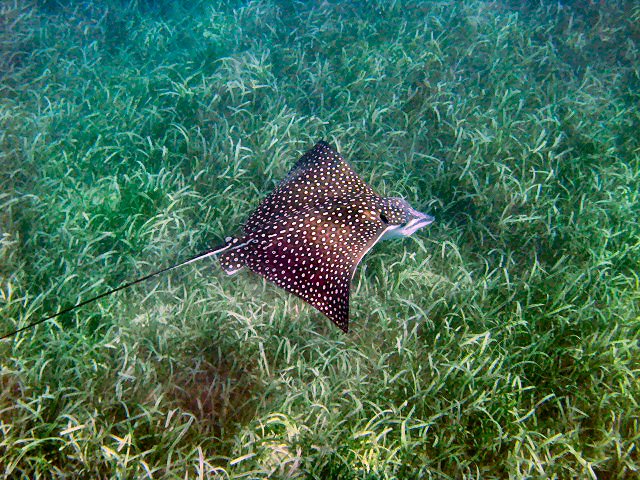
Crossing the Gulf of Mexico
SV Wereda with her two Janusz’es on board left Blue Dolphin Marina on her first leg of a series of voyages. It took 9 days for the trip. Janusz Szozda had a plane ticket to fly back to Houston on the same day we have docked at Conch Harbor Marina, Key West.
Cruising in Puerto Rico
Sailing from Key West to Aruba
A singlehanders lonely fight to resolve a problem in the marine business
I could easily fill a book recounting all the unbelievable things I have seen and heard in the course of my 36 years of active service in the vane gear business. In fact I did write a book once – and that is what spawned perhaps the most unbelievable train of events of all. My wife advises that I would be wise to keep my own counsel, but I can also see the counter-argument: reflections on life’s experiences – concentrated into anecdotes and retold with a desire to entertain as well as inform – represent an ideal way to revisit past events and bring them to the attention of a knowledgeable audience that would otherwise, in all probability, never have the chance to hear the other side of the story.
And the story needs telling, at least it does if our sailing community is to make any sense of the rumours and innuendo known to circulate in and about what German sailing magazine Yacht (#2/2002) once referred to as the “Windige Branche”, a clever – and rather inappropriate in my opinion – play on words meaning both the “windy industry” and the “dubious industry”. All respect to the leading lights at one of Europe’s leading publishing houses, but was it really necessary to go with a title that implies – and potentially misleads – so much? Why not just present the facts (complicated as they are, I admit) objectively and allow readers interested in the matter to reach their own conclusion?
The journalist entrusted with researching the aforementioned article, a real old hand in the writing trade, certainly implied things could have been managed much better: on the very day the issue containing the article hit the newsstands, I received a horrified phone call from him assuring me that while he was indeed named as the author, he had certainly not signed off the article in its published form, was appalled by the errors and changes it contained and wished to distance himself from its content and tone.
OK, getting a handle on the complex issues involved and turning the whole messy affair into a nice, neat story for publication was always going to be a challenge and it made sense to entrust such demanding and delicate matters to an external professional familiar with the scene. Did the publishers just not trust him enough in the end? Did they fail to appreciate the explosiveness of the material? Did deadline pressures make their presence felt? Did other cooks have their own plans for the broth? There are as many conflicting forces at work in journalism as there are journalists with an interest in the story!
The tale as printed did me no favours. The very harshness of the tone left me wincing every time I read it. It could have been a fine yarn too, after all it involved the conduct of the press itself, the relationship between manufacturers and press in the marine industry and the unwillingness of the press in both Europe and the USA to report on a matter of serious concern. It involved the duty of care of the press in respect of what it publishes and it involved libel, issues that in England (by way of example) provide particularly rich feeding grounds for the legal profession – with a tsunami-like impact on the financial health of the parties caught up in the process. This particular affair also involved editors finding themselves on the wrong side of the boss – even fired out of hand – for venturing, intentionally or otherwise, into hazardous journalistic waters. Not to mentioned questions of journalistic duty and integrity in the name and interests of the readership…
Journalists have a noble calling as conduits, mouthpieces, interpreters and investigators. To them falls the task of explaining the world to their readership, a role that brings with it tremendous freedom: the freedom to choose topics, the freedom to decide what is and is not important, the freedom to develop an angle and, not least, the freedom to delve deeper below the surface. Or not. Journalists do not cease to be ordinary people when they take up the pen or keyboard, of course. Flesh and blood like us, they share our strengths and weaknesses and struggle as much as any of us would to maintain an even keel in the face of demands and decrees from their publisher and the need to keep the commercial wind fair in the corporate sail. Success in this job depends on sensitivity and instinct – and a gift for sorting the wheat from the chaff. A Herculean labour no doubt, but one for which the end of every month brings the comfort of compensation.
Time is money, both are always thin on the ground and deadlines wait for no-one. Sometimes, then, the written word fails to convey the whole story. Permission to publish may be withheld, for example, or the threat of legal repercussions may intervene without readers having the slightest notion of the forces at work. They, not unreasonably, regard the published report as a conscientiously prepared product of painstaking research. Information committed for publication develops its own momentum, comes to life in the head of the reader (for evidence of this look no further than the reactions tabloid headlines often manage to stir up among the hard of thinking).
All the same, Yacht magazine in Germany and Practical Sailor in the USA at least showed the courage in time to report on this most peculiar of cases – a case that held a mirror up to the work of the press – and on the consequences for one party who lived the whole experience especially vividly: me! My compliments to the powers that be in both camps – albeit with reservations: the tone in which the story was reported got under my skin and now, for all that I’ve grown nine years older and (somewhat) wiser in the meantime, I want to put my side.
So what really happened?
Once – or should I say once upon a time – there was a certain Freddy Flyboy who, taking it upon himself to reinvent the mechanical self-steering system, hit on the idea of connecting a windvane to a system of hydraulic valves that would steer by controlling the flow of oil to a hydraulic cylinder similar in principle to those used in autopilots. The oil was to be pressurised by the action of a pump driven by a towed propeller, which, so the plan went, could also generate power to recharge the battery. Not content just to sit there laying golden eggs, this goose would wash, cook and clean as well (in a manner of speaking).
The minimal travel of the sensor windvane and a purely manual approach to calibration offering in the region of 2300 different settings made effective use in practice something of a challenge, as did the tendency of the towed propeller, which was supposed to follow along obediently behind the boat, to jump out of the water and stop spinning, in the process leaving the system with no power to steer. Despite these apparent shortcomings the system continued to sell year after year at wallet-busting prices, with most going to the owners of big yachts.
How can that be?
Customers put their faith in the system because they trusted the full-page product test report published in Yachting World, which read: “This is a unique product designed to solve two problems of today’s yachting at once: automatic steering and keeping the batteries charged on the modern power-hungry yacht. … an astonishing device!” Readers and purchasers had no reason to suspect the test had been authored by none other than an employee of the manufacturer. This revelation emerged only later, by which time the genie was out of the bottle. The manufacturer made hay while the sun shone, using the apparently objective YW report to build credibility and keep the money flowing in.
The flip side of the manufacturer’s successful sales strategy largely played out under the radar. The number of dissatisfied sailors completely unable to make the system work for them at sea rose inexorably. The milder of temperament wrote letters to the editor, others demanded remedial work, still others started talking to their lawyer and the most militant protested with placards at the London Boat Show, sought consular assistance, threatened to settle their differences with the manufacture mano a mano or called in the professionals at Scotland Yard.
Not all of them made headway by any means, indeed the manufacturer’s almost limitless creative manoeuvrings enabled him to put off the moment of reckoning indefinitely in most cases. One infuriated Oyster sailor managed to convince the manufacturer that he had no choice but to fly out to the yacht and make the system work in person, but even this proved futile: after an unsuccessful attempt to work through the various problems out on the Atlantic, the manufacture came out with something along the lines of “obviously the wind is not cooperative today” and vanished. The unit concerned soon found itself five fathoms deep.
A proper test on board Nigel Calder’s boat also found the system wanting, but with no details announced anywhere, suspicions grew that the results had been suppressed by legal means prior to publication. My attempt to extract an opinion from Calder, a renowned author on all things technical afloat, was rebuffed with a comment to the effect that the journalists were not prepared to take out liability insurance for a libel case and consequently the legal risks for him were just too great – Sorry Peter!
It was 1997 when Jimmy Cornell brought me together with the movers and shakers at Adlard Coles Nautical in London to write the book Self-Steering Under Sail. Buoyed by the positive review in Yachting World (which had never been retracted and continued to serve the manufacturer’s marketing efforts splendidly) and by the continued absence of any negative feedback in the press, the hydraulic system with the cryptic name of “Fluid Logic” had already been parting sailors from their hard-earned for several years by this time. Angry letters from sailors landed in the inbox of just about every editor in the sector, only to migrate on into the filing cabinet and disappear without trace. Now why might that be?
The idea of dedicating a section of my book to power generator/autopilot hybrids and describing the system concerned seemed consistent, appealing and logical – and turned out to be a very expensive misjudgement!
The book, including my review of the main points to consider in respect of the hybrid system and my “seven key parameters for comparing this type of autopilot hybrid with a conventional inboard autopilot”, was launched in December 1998. A little voice in the back of my head reminds me whenever I begin to write that delicate matters demand sensitive handling. Hence I limited myself to a run-through of the mechanical operating principles and observations on the damping and control features and made no judgment on or criticism of the system. Nevertheless my remarks clearly hit a nerve. And hard: my fellow self-steering supplier filed for defamation and libel in the High Court in London not only against me, the author, but also against my publisher Adlard Coles, a venerable institution that had never previously faced anything as distasteful as a trip to court.
The sudden prospect of legal action triggered a frenzy of activity both in London and here in Hamburg. In reality we had little to fear from the law itself. The peculiar approach of the English legal system to the rights and obligations of the press, on the other hand, is very conducive indeed to generating costs on a scale that would be unthinkable elsewhere in the world.
The merits of the case aside, this heady combination of an eager claimant, a society known for expensive legal proceedings and a pair of defendants with no experience in such matters made for anxious days and sleepless nights. At the forefront of our thoughts was the precedent set by a recent and at least superficially similar case in England against IPC Press, the publisher of Yachting World. Yachting World had published a test report on a wingsail trimaran in which it apparently set forth its (unimpressed) observations on the sailing performance of the boat with insufficient subtlety. The company behind the wingsail took offence and – to the astonishment of everyone familiar with the facts – prevailed in court. Even more astonishing was the scale of the libel damages awarded against the publisher, which gave the magazine’s editor his marching orders following the verdict.
It soon emerged that “my” claimant had more than a passing acquaintance with the successful claimant in the IPC case. Method, tactics and legal representation were identical, as was the objective: David versus a publishing Goliath in pursuit of damages aided by the favourable winds of English press law.
I discovered too late that my publishers had done a deal to settle their side of the case out of court because, as I learned, negotiations concerning the sale of the business were underway and pending litigation would be likely to affect the outcome. I was sacrificed without warning by a company for which I had spent months preparing the case files. I had never doubted for a moment that we would see the case through together. Wrong again!
So now it was just me before the court – me and a pumped-up claimant boosted by his recent victory. Wiping out the German author must have seemed like a formality after his one-man-band success in forcing a global publishing house into an expensive settlement. The situation looked bleak. The price of losing didn’t bear thinking about, but winning was clearly also going to be very expensive: every hour in discussion with my legal team cost the equivalent of a smart new windvane steering system. And we deliberated for hundreds of hours…
This all happened in a time before Google when the internet was still in short trousers. Assembling a convincing dossier of victims of the contentious system took months of work, hundreds of e-mails and telephone calls and arduous research all over the world, but eventually we had details of 36 separate cases – and enough material for a detective thriller!
The story that emerged told of a businessman with a questionable respect for the law who had managed to carry on selling successfully for many years, virtually untouched by the press or commentators (whose silence he ensured through legal threats), even though his product appeared unable to satisfy the great majority of its customers. I hope you will understand if I refrain from putting this in more straightforward terms.
As one person familiar with the proceedings was heard to ask, how can it even happen that a product apparently undergoes 50 technical modifications in just a few years, with manuals revised every month, and yet the manufacturer seems to have only once refunded a customer, transferring all of the other (advance) payments received to an account in a tax haven where they would remain safely out of reach?
What I found particularly dispiriting at this point was the limp response of magazine editors all over Europe and the USA to my request for assistance in a flagrant case of deception affecting the global sailing community. It seemed nobody was prepared to stick their head above the parapet for fear of being dragged through the courts themselves. Everyone at the relevant publications seemed to know about it, indeed journalists I spoke to were often effusive in expressing their support. They wasted no time in wishing me good luck, but of actual active assistance I received none even though readers of just about every publication I spoke to had been affected.
The newly appointed editor in chief of Yachting World was particularly direct: “Sorry Peter, I cannot help you. Please f**k the plaintiff – but leave me out!” To be fair, his hands were most definitely tied: his predecessor had only left the post after falling foul of the courts in a similar case a short time previously.
Tracking down good lawyers in England proved difficult and it took a number of false starts before I found the right team. Rates of GBP 600 an hour left me weak at the knees (not to mention rather unpopular at the bank) and I seemed to spend half my existence in airport and hotel lounges. All thoughts of a private life were on hold. Eventually though the fates smiled on me. I discovered a prominent specialist in press law, who had previously worked for the British royal family, and found his verdict on reviewing the case documents both considered and encouraging: Simon was my man (I even gave my son born shortly thereafter the same name). Our barrister, moreover, turned out to be an enormously experienced sailor in her own right and her partner no less than an ardent Windpilot aficionado! Now I could be confident that none of the nuances of this complex matter would go unmarked and had the goodwill I felt I needed to help a German technical author surmount the quirks of English press law.
Eventually my bulging file full of the extraordinary stories of the victims of a product purporting to mark a new dawn in the world of self-steering also won over Justice Charles Gray, the judge assigned to the affair, who brought my two-year nightmare to an end by striking out the action. Hours later the claimant filed for bankruptcy. Many years later I received a cheque for EUR 7000 from the judicial sale process, but obviously that barely scratched the surface of the mountain of costs with which I was left.
I would like to say I learned from the experience, but the most obvious lessons are rather unpalatable. Among the many unpleasant shocks and surprises of the whole business, the conduct of certain of my competitors clearly stands out. Those concerned welcomed the chance to see preprints of the book, some even commissioning the publisher to advertise their own products in the back. Once the legal proceedings had begun, however, the publisher started to receive complaints from the same people – apparently on the basis that the book had taken them by surprise! The combined effect of these complaints to the publisher from a group of competitors who all appeared to be cooperating with the claimant certainly did not make the situation any easier. Interestingly, reviews of the book tended to laud it as “even handed”…
I do not intend to name names here; suffice it to say that there were only a few people who refrained from joining in the attempt to ride a competitor out of town and that – as if by chance – those few were the same small group along with whom I have been serving the market amicably for several decades in a spirit of genuine mutual respect.
Having always been open and friendly towards the press, I was also struck by how little support I received in return when it really mattered and I now have a completely different view of the effectiveness and authenticity of journalists. It is hard to have any confidence in representatives of the press after my personal experience of their attempt to ignore – or at least to brush under the rug – the facts of a case with serious implications not just for me, but for the readers they supposedly exist to serve.
In particular I will never forget the fact that the nautical press left me on my own to tackle a problem in the marine business that actually fell squarely within its own remit. All but the two exceptions mentioned fell silent in the face of the challenge.
A SINGLEHANDER’S LONELY FIGHT TO RESOLVE A PROBLEM IN THE MARINE BUSINESS turned out to be my own private fight for survival, a fight the effects of which I still feel to this day.
Peter Foerthmann
P.S.: SELF-STEERING UNDER SAIL is available in six different languages, sells for a minimum of US$ 60.00 new on Amazon.com and has been downloaded from the Windpilot website as a free e-book more than 865,000 times.
SV September, Klaus Tischhauer GER
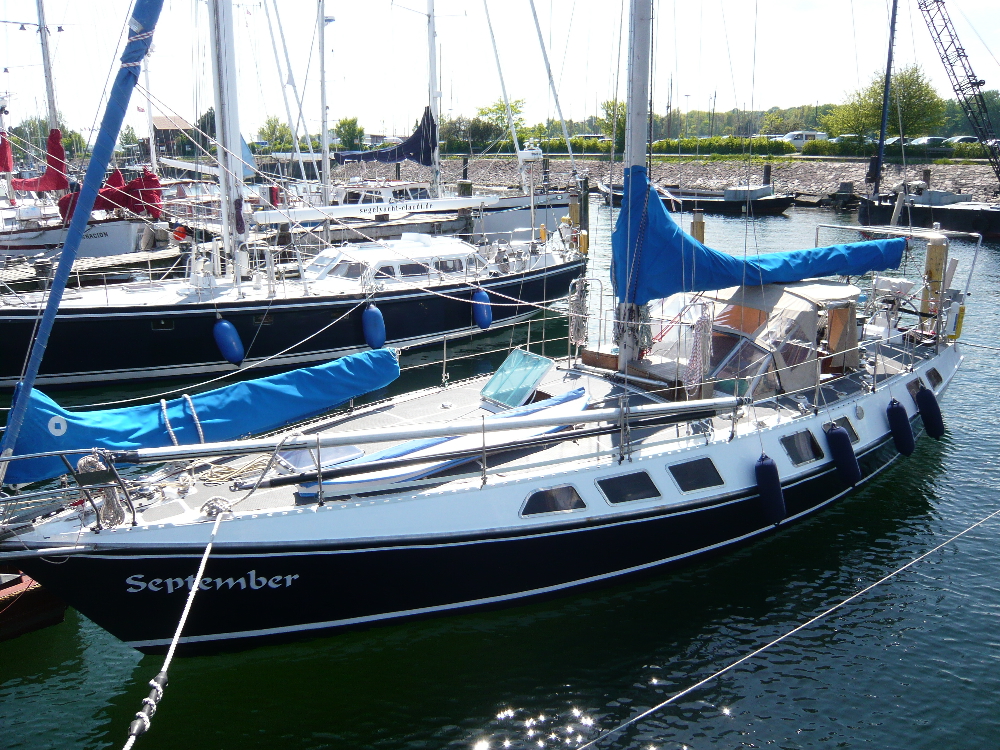 Sehr geehrter Herr Förthmann
Sehr geehrter Herr Förthmann
hier sende ich Ihnen einen YouTube link Ihrer Windpilot Pacific im Einsatz bei einer Atlantiküberquerung.
Hat immer bestens geklappt.
Das Schiff ist eine Reinke Hydra SC, wahrscheinlich gegen 20 Tonnen schwer. Befestigung an der kippbaren Badeplattform. Sicher nicht ideal, aber es hat immer funktioniert.
Mit freundlichem Gruss
Klaus Tischhauser
SPIEGEL #19 / 2011 Laura Dekker WEIT DRAUSSEN
Die Niederländerin Laura Dekker will als jüngste Seglerin die Welt umrunden. Jugendschützer versuchten, die Rekordjagd zu verhindern, doch nun ist die 15-Jährige mit ihrer Yacht „Guppy“ unterwegs. Die Eltern werden von Gewissensbissen geplagt.
Hier der SPIEGEL BERICHT Laura Dekker
SV Venus, Uwe Roske GER
im Januar 2010 sind wir mit Ihrem Windpilot sehr gut über den Atlantik gekommen und freuen uns, dass wir gerade an Sie geraten sind, als es um den Kauf der Windsteueranlage ging. In diesem Jahr benutzen wir die Anlage nicht (außer im Juni für die Strecke von Puerto Rico nach Curacao), aber im nächsten Jahr wieder, wenn wir in den Pazifik gehen werden.
Wenn wir die Windsteueranlage benutzen, müssen wir die Flagge einholen. Trotzdem möchte ich – wie man das immer mal bei anderen sieht – “Flagge zeigen” und die deutschen Farben auf der Windfahne haben. Andererseits warnen Sie davor, das Gewicht der Windfahne zu verändern. Wie gewichtig ist dieser Hinweis? Darf ich Farbe oder Folie aufbringen?
Mit bestem Dank und freundlichen Grüßen aus der Karibik
Dr. Uwe Roske
www.SYVenus.de
What ever happened to boat building? Part 4
Hello again!
Without wishing to mourn unduly the passing of traditional boat-building skills or to brush aside several decades’ worth of developments in yacht design, I believe we can safely agree on the following:
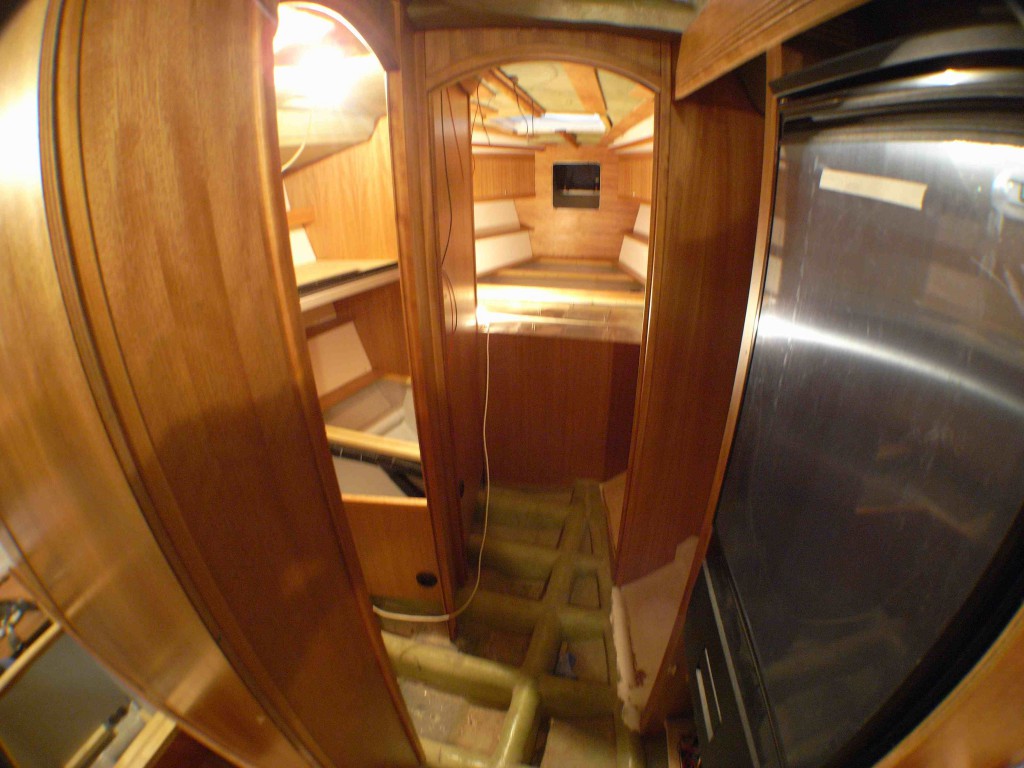 modern industrial production methods have greatly reduced the amount of effort, as measured in hours of work, involved in building a sailing boat (manufacturers would otherwise have little interest in mass-produced yachts – the scale of the potential value added is what sets the big players salivating).
modern industrial production methods have greatly reduced the amount of effort, as measured in hours of work, involved in building a sailing boat (manufacturers would otherwise have little interest in mass-produced yachts – the scale of the potential value added is what sets the big players salivating).
It seems rather curious then that while the automotive industry, for example, generally makes no secret of the number of hours of work required to manufacture different cars, the amount of time taken to build a boat never gets an airing in public. We have to content ourselves with speculation – and we speculate that it probably does not take very long at all. Also striking is the fact that while modern production yachts progress through the yard very much faster than their predecessors, the price we pay for them has not fallen at the same rapid rate.
Today’s volume manufacturers manage to maintain extensive ranges and unveil new models frequently despite selling but a modest number of each design. We can deduce from this that, thanks to modern moulding techniques, they do not have to shift many units of a new product before moving into profit. How else could they carry on launching new products at the current breathless pace?
With the price of a new boat now broadly comparable with that of a fairly serious piece of real estate, I do not think it unreasonable to raise the question of just how well today’s craft hold their value. While marketing can affect this to an extent, sailors are very well attuned to more concrete factors – notably the quality of their floating beauties as verified in long-term use and, of course, simple supply and demand – and it tends to be these that determine the price for which pre-loved (or not) boats eventually change hands.
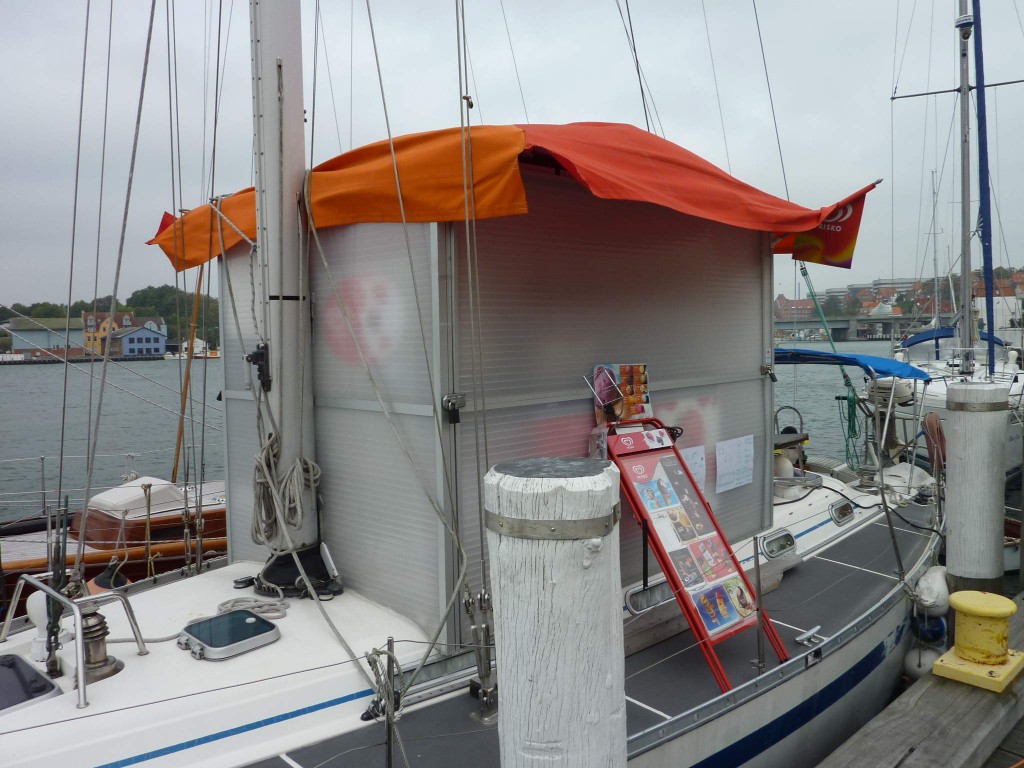 Some would apparently like us to believe a yacht has a maximum life expectancy after which the scrap heap beckons, but as sailors our heart, our head and our experience all tell us otherwise. Consider what happens in other areas. When it comes to a house, for example, the principles we apply are quite different. We more or less take it as gospel that in the long term, the price of a home in bricks and mortar moves in one direction only: upwards.
Some would apparently like us to believe a yacht has a maximum life expectancy after which the scrap heap beckons, but as sailors our heart, our head and our experience all tell us otherwise. Consider what happens in other areas. When it comes to a house, for example, the principles we apply are quite different. We more or less take it as gospel that in the long term, the price of a home in bricks and mortar moves in one direction only: upwards.
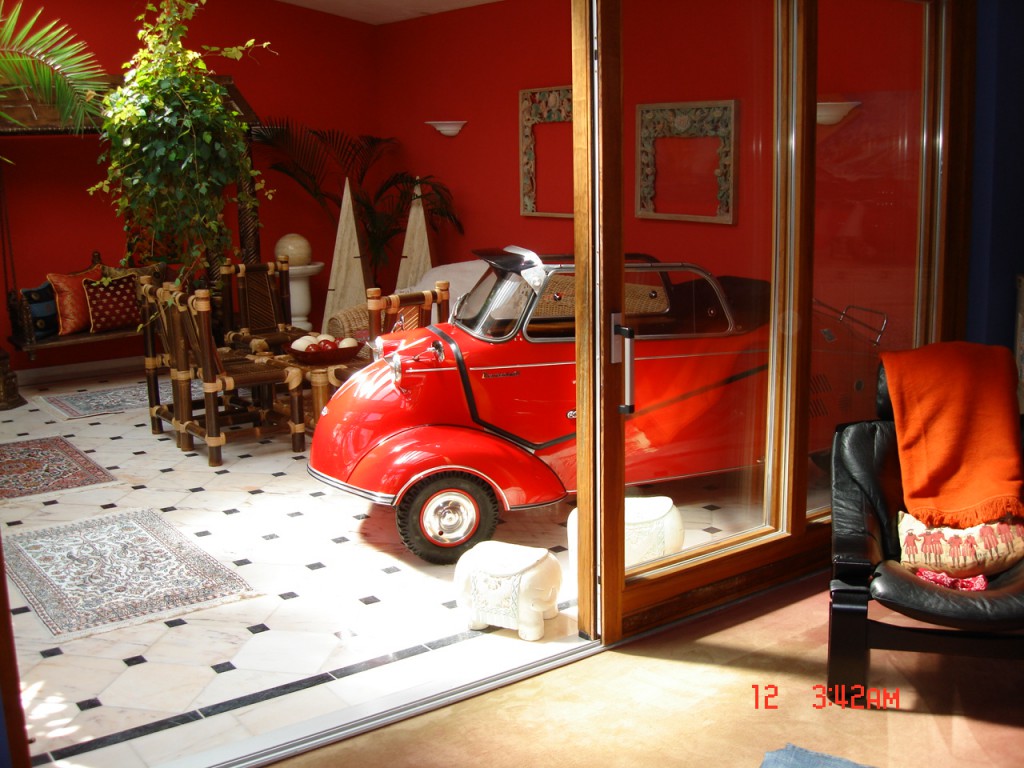 Cars, in contrast, begin losing value and integrity to depreciation and rust from the moment they leave the showroom and only the passing of the years reveals which models have the wherewithal to bounce back as classic collector’s items and which go for scrapping ready to do it all again in some other form.
Cars, in contrast, begin losing value and integrity to depreciation and rust from the moment they leave the showroom and only the passing of the years reveals which models have the wherewithal to bounce back as classic collector’s items and which go for scrapping ready to do it all again in some other form.
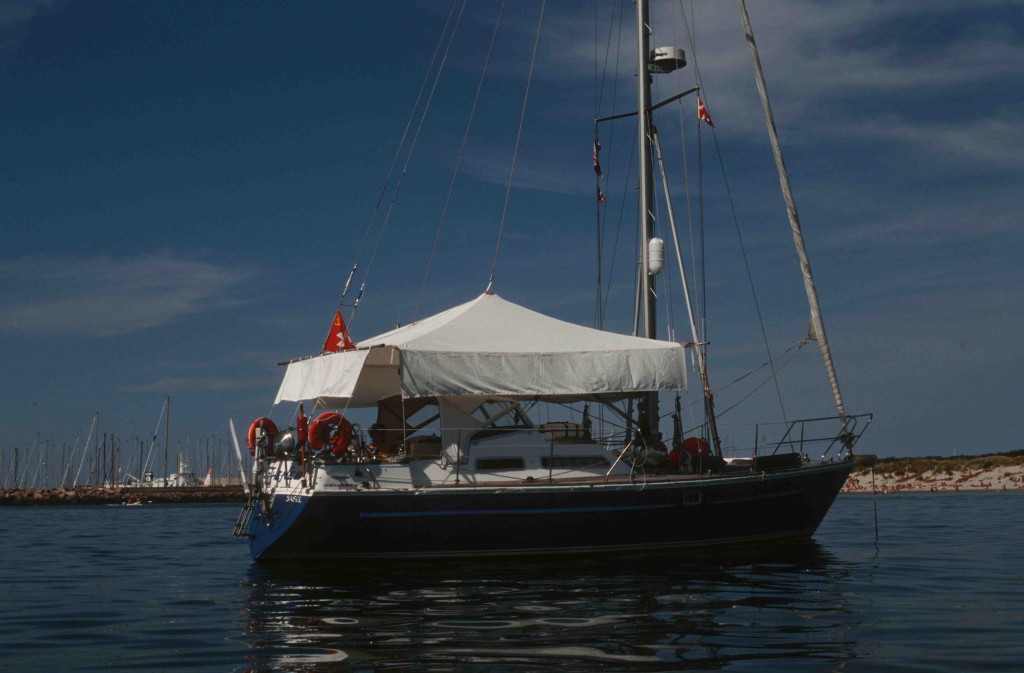 How the value of our floating assets evolves in practice largely comes down to build quality, but it’s hard to imagine any sailor accepting that his or her boat would be ‘sailed-out’, as it were, after a certain number of years and then being prepared to accept any price on the grounds that anything is better than nothing for an ‘end-of-life’ product.
How the value of our floating assets evolves in practice largely comes down to build quality, but it’s hard to imagine any sailor accepting that his or her boat would be ‘sailed-out’, as it were, after a certain number of years and then being prepared to accept any price on the grounds that anything is better than nothing for an ‘end-of-life’ product.
Sailors have a highly refined sense of value when it comes to their boats. However finding a potential buyer with a similar view of worth is proving especially difficult for many sellers at the moment and while those of stout heart can usually manage a polite refusal, responding to a perceived derisory offer for a boat in which you have invested  so much of yourself can be a painful business (such situations are handled more dispassionately in the USA, where sellers seem able to accept or refuse offers freely without any sense of personal insult – emotions play no role here and tears are seldom shed).
so much of yourself can be a painful business (such situations are handled more dispassionately in the USA, where sellers seem able to accept or refuse offers freely without any sense of personal insult – emotions play no role here and tears are seldom shed).
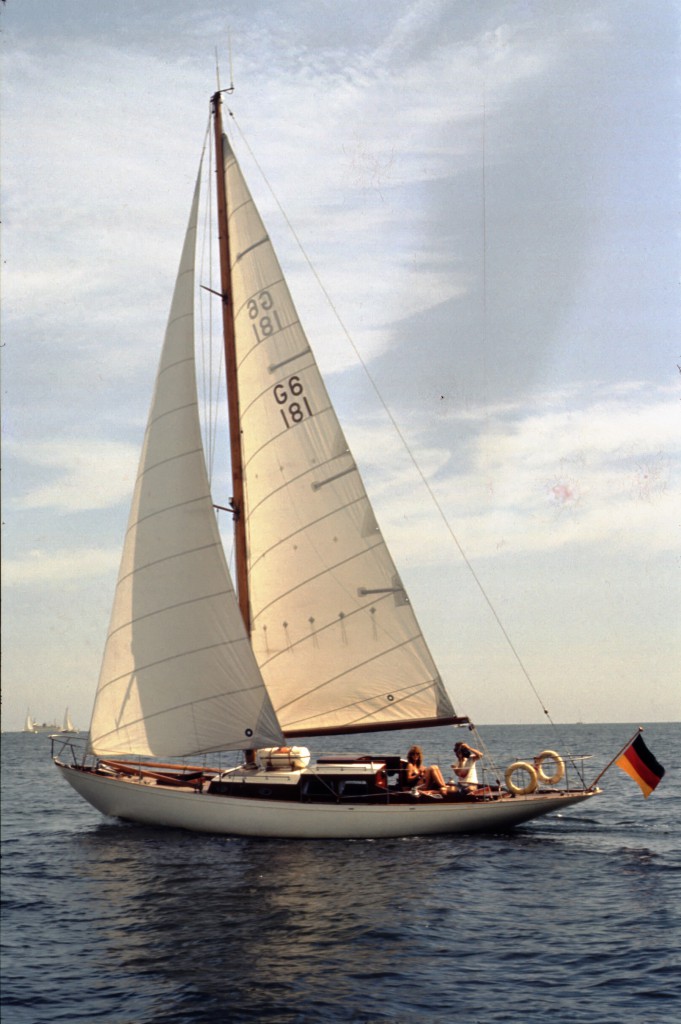 But back to the matter in hand: the better its quality (which equates more or less to how well it is built), the better a yacht will hold its value. The venerable old-timers already enjoy a strong market and the new classics are following a similar path. Mass-produced GRP yachts, in contrast, are available in huge numbers second hand, in most cases at broadly similar prices, but sales have become increasingly rare and the market has just about ground to a halt. Deep price cuts now represent pretty much the only way to attract a buyer. For months my head has been absorbing scarcely believable facts about boat sales and the prices actually paid for thoroughly respectable yachts. These are good times indeed for sailors on the hunt for the perfect steed: buyers reign supreme. Well, almost. Extraordinarily, the market for aluminium yachts seems to march to the beat of a different drummer entirely.
But back to the matter in hand: the better its quality (which equates more or less to how well it is built), the better a yacht will hold its value. The venerable old-timers already enjoy a strong market and the new classics are following a similar path. Mass-produced GRP yachts, in contrast, are available in huge numbers second hand, in most cases at broadly similar prices, but sales have become increasingly rare and the market has just about ground to a halt. Deep price cuts now represent pretty much the only way to attract a buyer. For months my head has been absorbing scarcely believable facts about boat sales and the prices actually paid for thoroughly respectable yachts. These are good times indeed for sailors on the hunt for the perfect steed: buyers reign supreme. Well, almost. Extraordinarily, the market for aluminium yachts seems to march to the beat of a different drummer entirely.
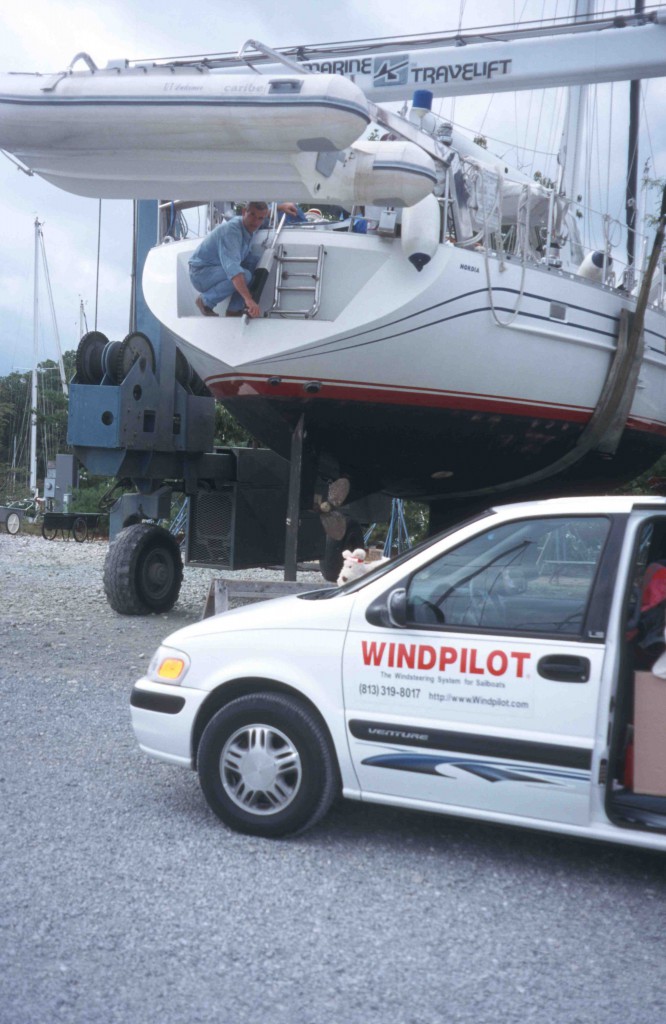 I am sure sailors of all persuasions understand that aluminium hulls are in a completely different league when it comes to build strength and durability. They are just inherently more robust in all respects than production GRP boats.
I am sure sailors of all persuasions understand that aluminium hulls are in a completely different league when it comes to build strength and durability. They are just inherently more robust in all respects than production GRP boats.
Anyone harbouring any lingering doubts should spend a few minutes browsing the photo archive of insurer PANTAENIUS, which gives a fairly compelling insight into the toughness of boats that fall foul of extreme weather, get too friendly with another boat or otherwise overindulge in off-piste activities.
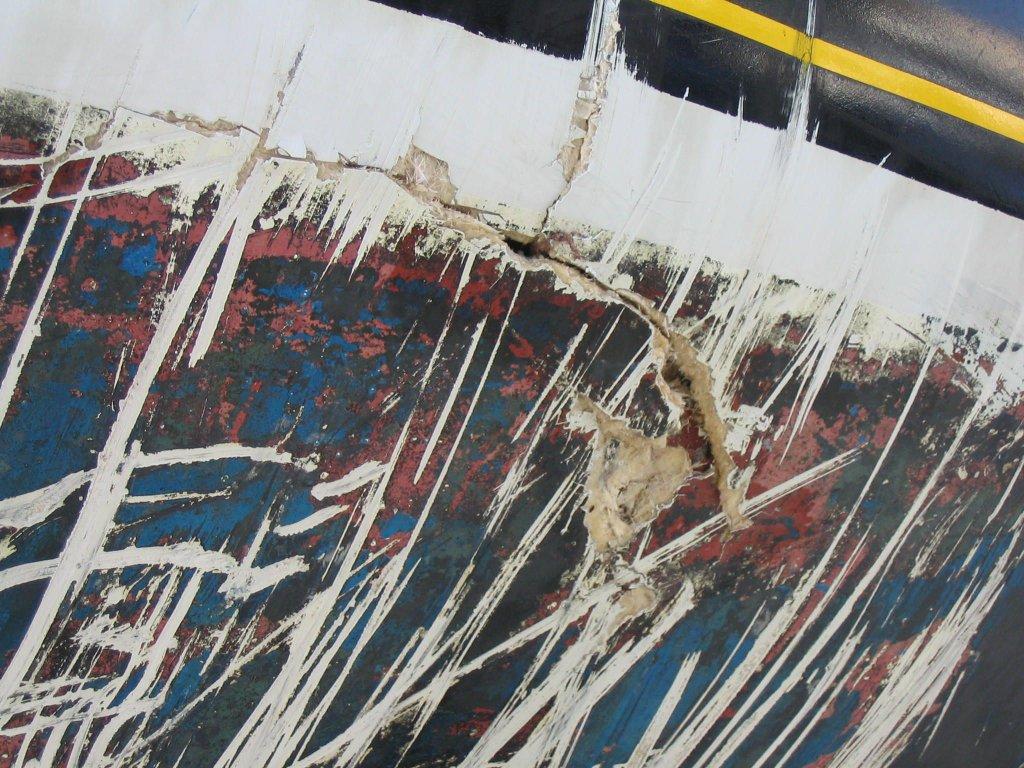
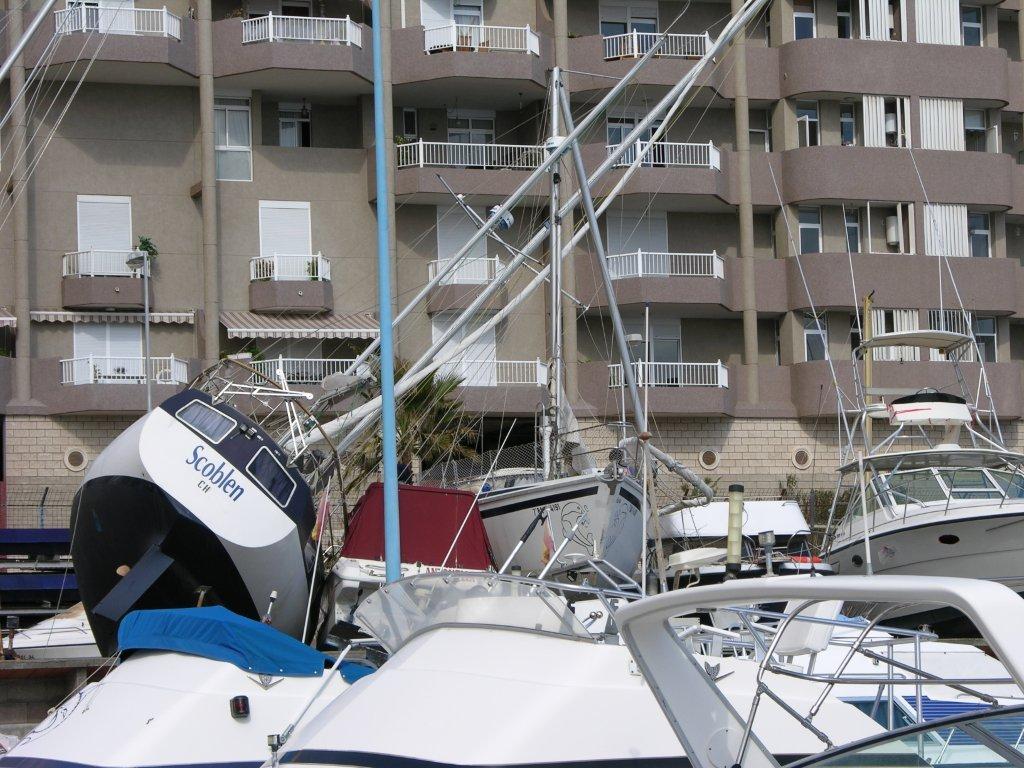
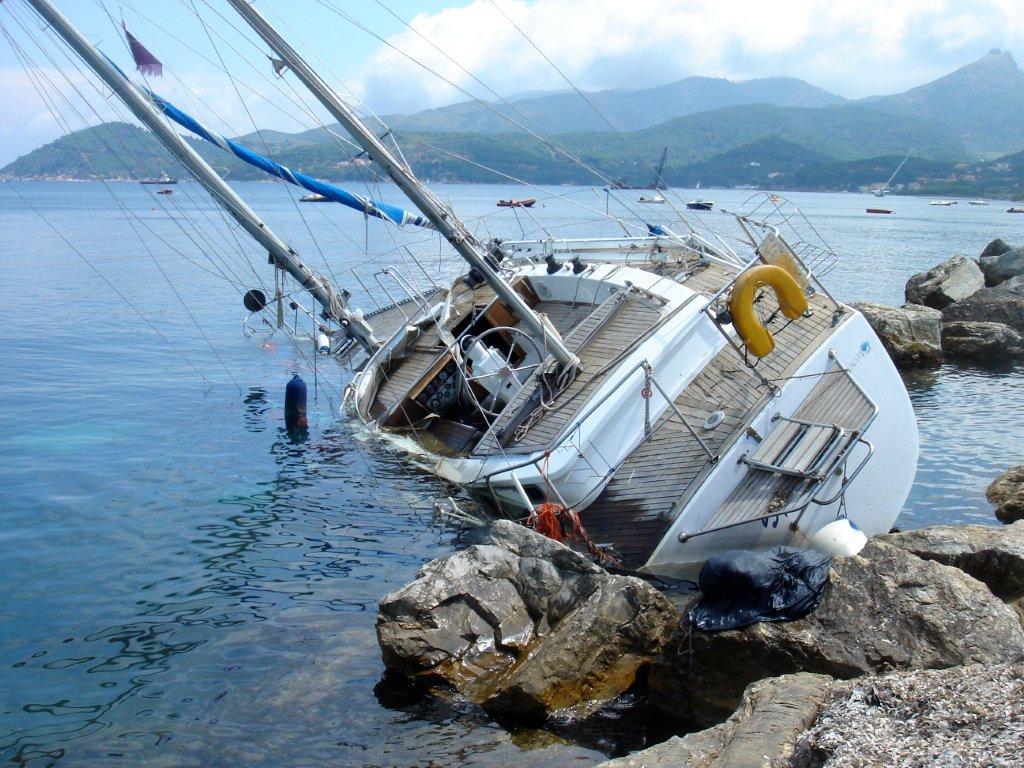
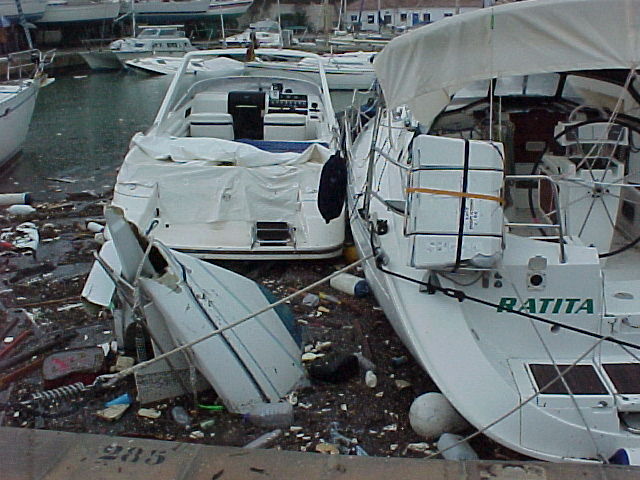
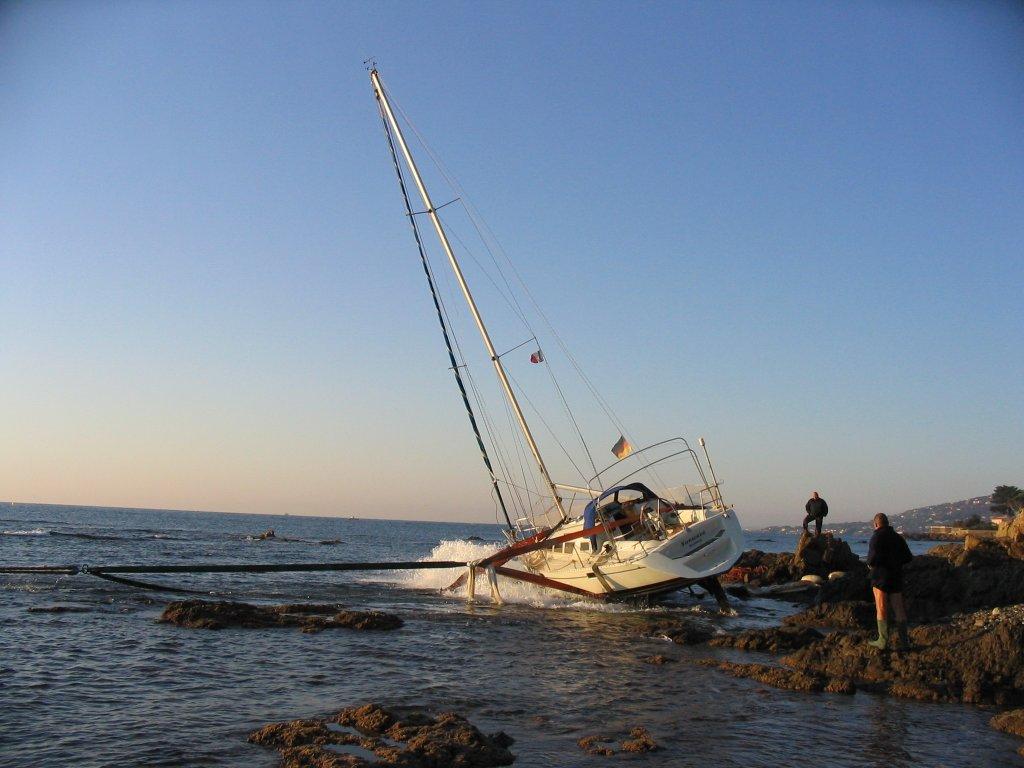
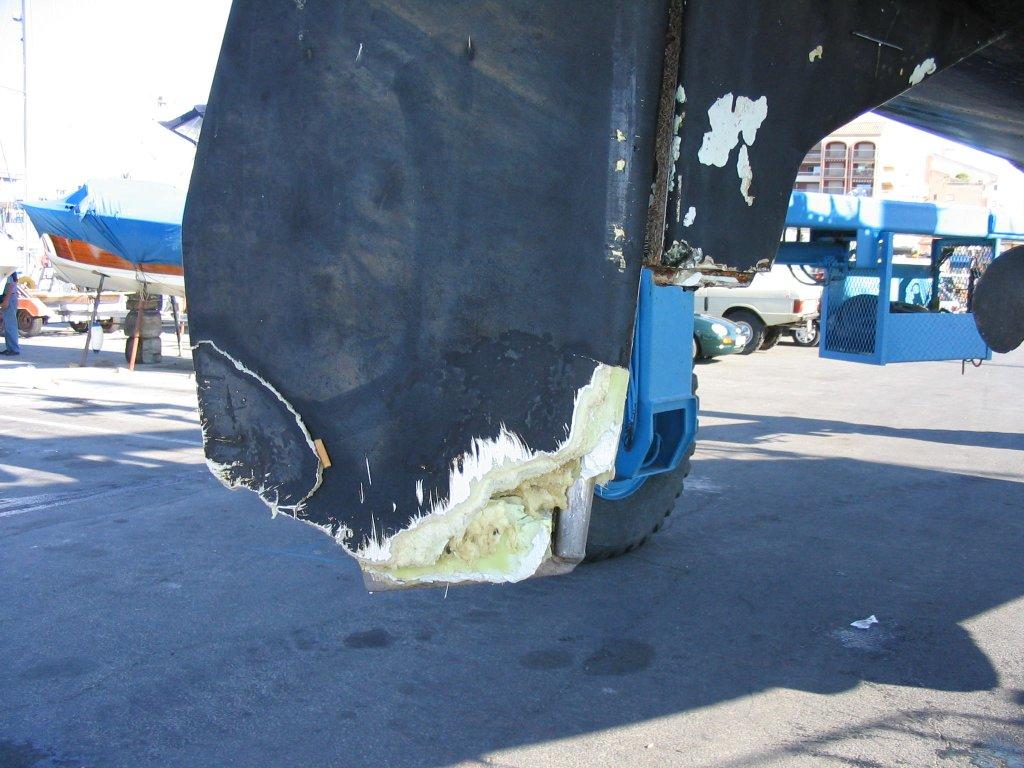 Almost all of the metal yachts built in Germany come from small-scale builders with little or no production automation, so hull costs alone tend towards the eye-watering and the price of a finished boat is seldom less than staggering. One-offs aside, Germany is quite insignificant internationally as a producer of aluminium yachts; in fact the only German company to have achieved significant numbers is Reinke, whose hard chine designs can also be built by fearless DIY-ers (just how many projects there are languishing half-finished at the end of gardens all over Germany after would-be boat-owners found the work harder than anticipated, the costs more than they could stomach or the looming prospect of divorce too unattractive to contemplate nobody knows, but it’s likely to be more than a few). Self-build projects offer little prospect of adding value, as no matter how well they may have performed in use, home-made boats always bear the stigma of amateur construction and the associated fear that perhaps not everything has ended up quite as it should. Building a boat represents a much more complex undertaking than something like building a house and many sailors have found their self-build dreams in tatters sooner or later because they embarked on the adventure without having had the scale of the task made clear to them.
Almost all of the metal yachts built in Germany come from small-scale builders with little or no production automation, so hull costs alone tend towards the eye-watering and the price of a finished boat is seldom less than staggering. One-offs aside, Germany is quite insignificant internationally as a producer of aluminium yachts; in fact the only German company to have achieved significant numbers is Reinke, whose hard chine designs can also be built by fearless DIY-ers (just how many projects there are languishing half-finished at the end of gardens all over Germany after would-be boat-owners found the work harder than anticipated, the costs more than they could stomach or the looming prospect of divorce too unattractive to contemplate nobody knows, but it’s likely to be more than a few). Self-build projects offer little prospect of adding value, as no matter how well they may have performed in use, home-made boats always bear the stigma of amateur construction and the associated fear that perhaps not everything has ended up quite as it should. Building a boat represents a much more complex undertaking than something like building a house and many sailors have found their self-build dreams in tatters sooner or later because they embarked on the adventure without having had the scale of the task made clear to them.
Although Germany has several manufacturers capable of holding their own internationally in the field of production GRP boats, it has seen little if any significant innovation in the production of aluminium hulls. We need look no further than Holland though for a good example of what can be achieved.
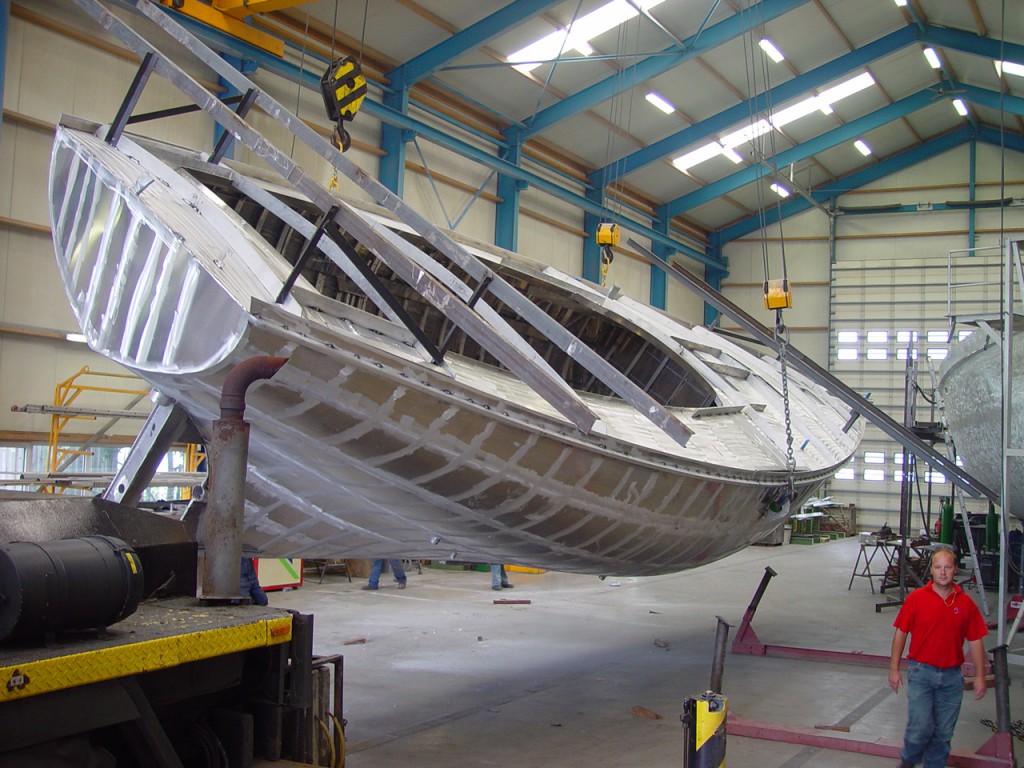
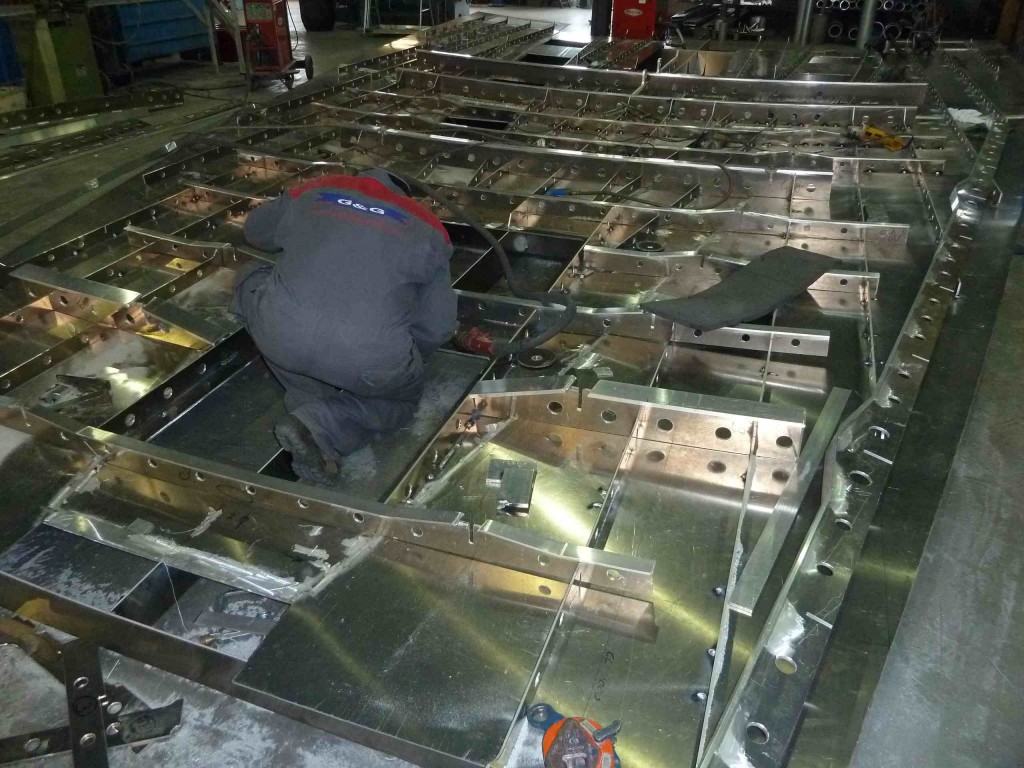
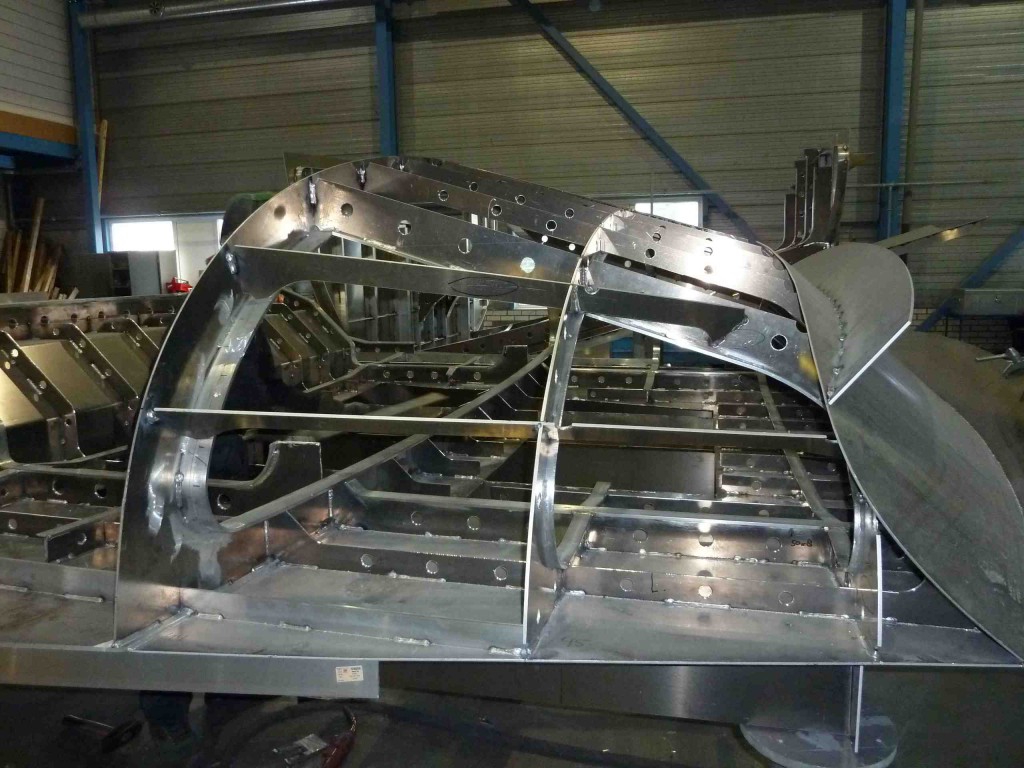
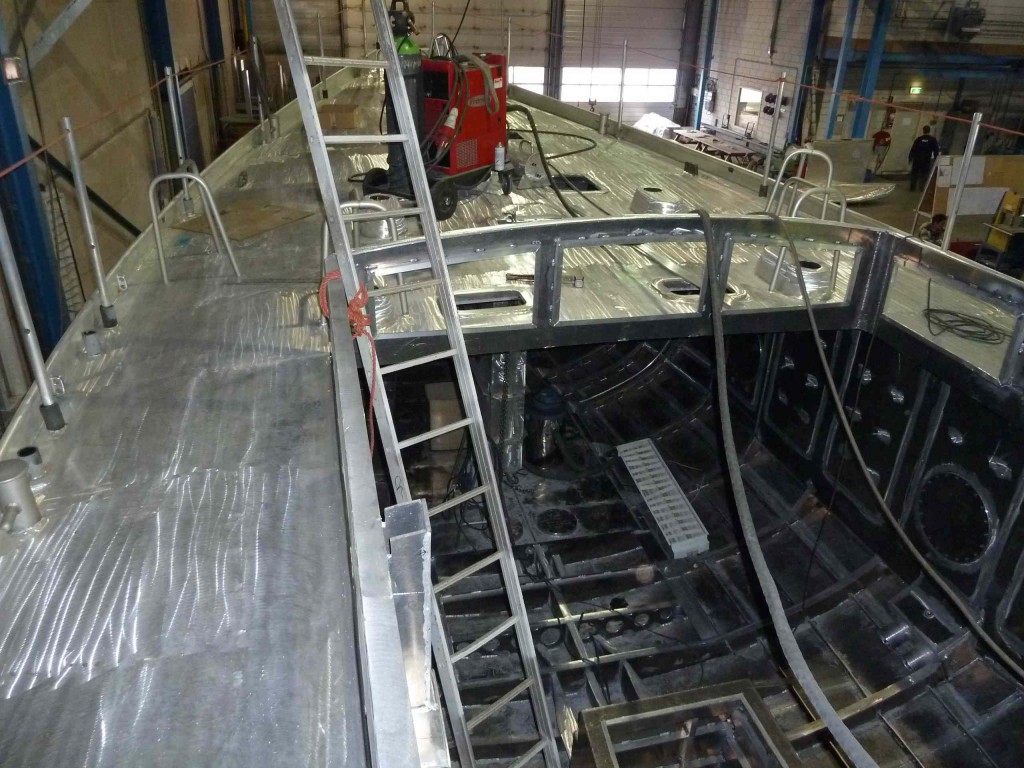 The Dutch have quite a number of yards that have transferred the production methods learned in ship-building to yacht construction: computer systems control the entire process, from lofting whole sections to cutting out the various components (using plasma cutters) and shaping and finishing them, which makes it possible to produce a finished hull with minimal tolerances and very smooth lines. The result is yachts with a perfect surface finish that need no more than sand-blasting; filling and painting are seldom required.
The Dutch have quite a number of yards that have transferred the production methods learned in ship-building to yacht construction: computer systems control the entire process, from lofting whole sections to cutting out the various components (using plasma cutters) and shaping and finishing them, which makes it possible to produce a finished hull with minimal tolerances and very smooth lines. The result is yachts with a perfect surface finish that need no more than sand-blasting; filling and painting are seldom required.
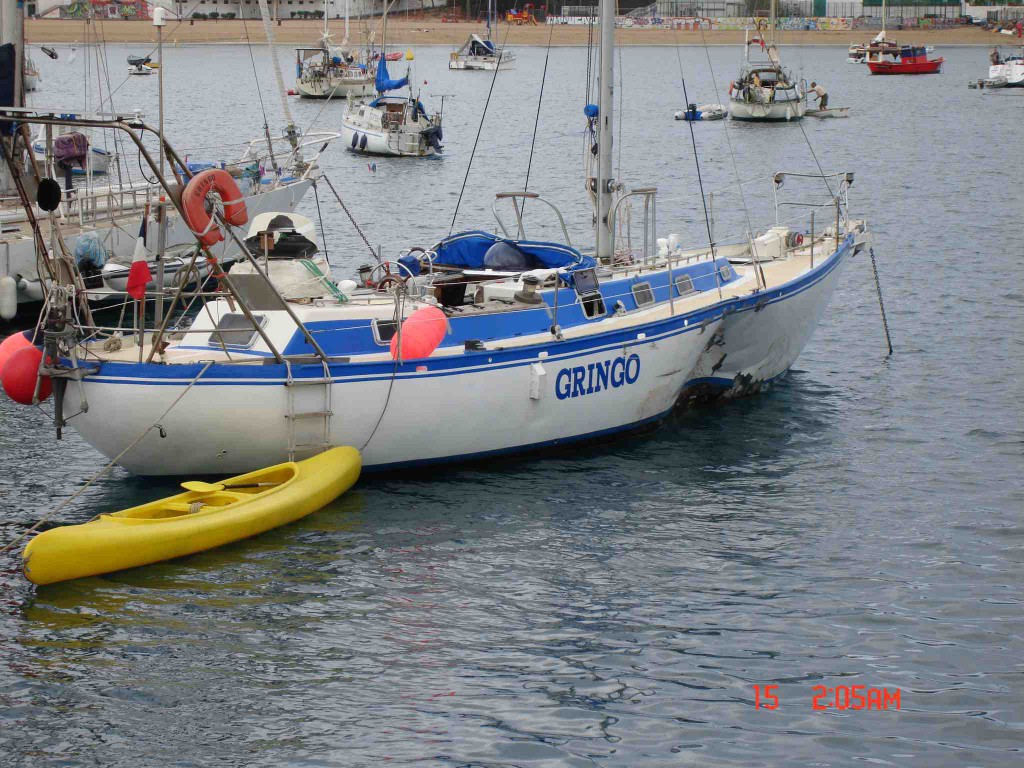 The traditional frame designs and spacings used in aluminium hull construction of course make it enormously strong too. Even grounding, encounters with ice and other sleepless-night-inducing impact scenarios need not necessarily be a problem for a well-found aluminium yacht. The fact that hulls built in seawater-resistant 5083 grade aluminium do not even need painting means they are ideally prepared for the knocks and dings of everyday use – and further underlines just how different they are to modern eggshell-thin GRP equivalents, which have little in the way of load-bearing structure and seem decidedly fragile by comparison.
The traditional frame designs and spacings used in aluminium hull construction of course make it enormously strong too. Even grounding, encounters with ice and other sleepless-night-inducing impact scenarios need not necessarily be a problem for a well-found aluminium yacht. The fact that hulls built in seawater-resistant 5083 grade aluminium do not even need painting means they are ideally prepared for the knocks and dings of everyday use – and further underlines just how different they are to modern eggshell-thin GRP equivalents, which have little in the way of load-bearing structure and seem decidedly fragile by comparison.
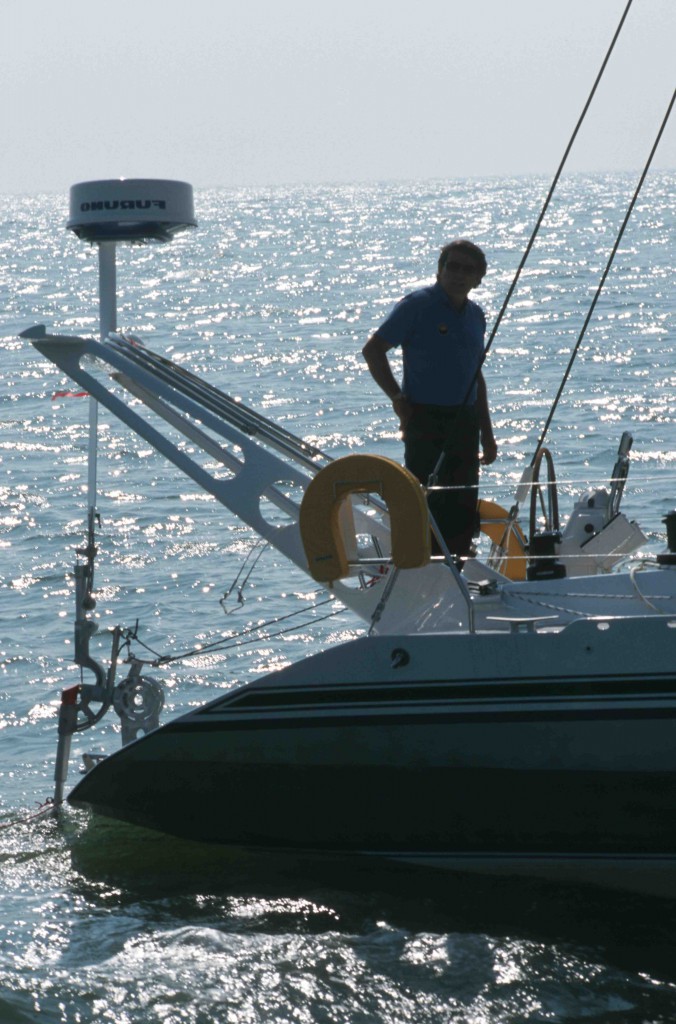 Aluminium even has advantages over steel, as Jimmy Cornell, who has been around the world with both, neatly summarises: on his steel boat, the paintbrush used for touching up after the bumps and scrapes of harbour life seldom had a chance to dry, whereas errant helms careless enough to make contact with his aluminium hull received nothing but a smile and “Have a nice day!” After ten years and something like 80,000 nautical miles of sailing, his OVNI 430 still looked fresh as the dew and eager to set out adventuring again with her new owner.
Aluminium even has advantages over steel, as Jimmy Cornell, who has been around the world with both, neatly summarises: on his steel boat, the paintbrush used for touching up after the bumps and scrapes of harbour life seldom had a chance to dry, whereas errant helms careless enough to make contact with his aluminium hull received nothing but a smile and “Have a nice day!” After ten years and something like 80,000 nautical miles of sailing, his OVNI 430 still looked fresh as the dew and eager to set out adventuring again with her new owner.
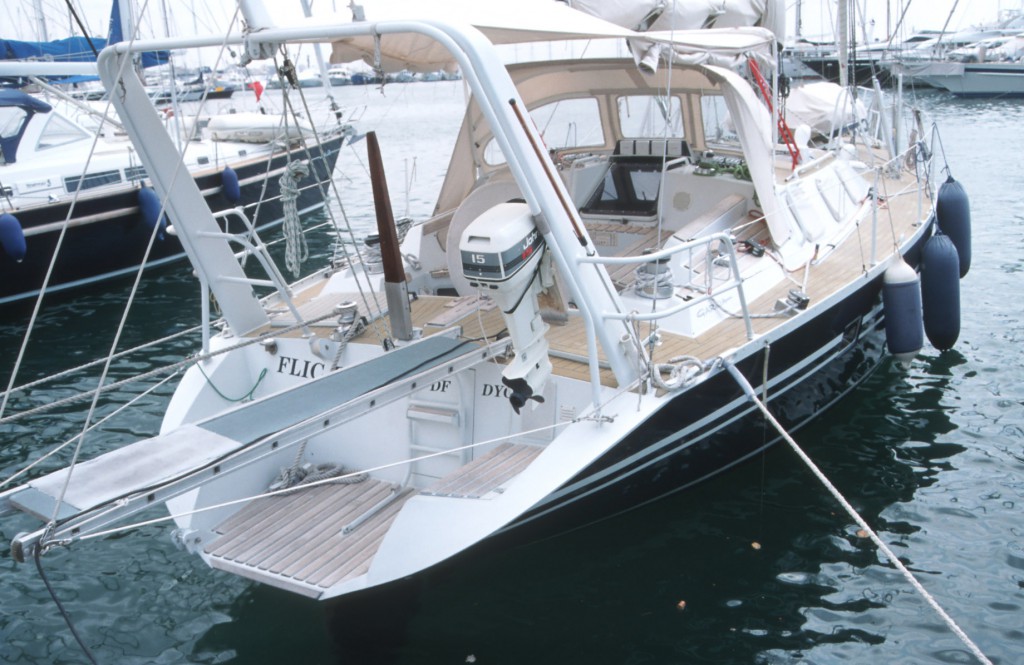 Anyone who has seen how production OVNI yachts take shape at the yard in Les Sable d’Olonnes will understand very well how they have come to be so popular. They are only moderately more expensive, relatively-speaking, than GRP boats, demand and lead times are enormous and the second-hand market is quite stable, as if there had been no financial crisis at all. France has always produced a large number of aluminium yachts, in part perhaps because Eric Tabarly adopted the material early on for his Pen Duicks, but also because French yachtsmen and -women tend to sail more, harder and in tougher conditions. France, remember, is different. A true nation of seafarers, the French, seadogs and landlubbers alike, revel in the record-breaking exploits of their sailors and turn out in huge numbers to support and honour the country’s nautical heroes with a passion reserved in most other countries only for football.
Anyone who has seen how production OVNI yachts take shape at the yard in Les Sable d’Olonnes will understand very well how they have come to be so popular. They are only moderately more expensive, relatively-speaking, than GRP boats, demand and lead times are enormous and the second-hand market is quite stable, as if there had been no financial crisis at all. France has always produced a large number of aluminium yachts, in part perhaps because Eric Tabarly adopted the material early on for his Pen Duicks, but also because French yachtsmen and -women tend to sail more, harder and in tougher conditions. France, remember, is different. A true nation of seafarers, the French, seadogs and landlubbers alike, revel in the record-breaking exploits of their sailors and turn out in huge numbers to support and honour the country’s nautical heroes with a passion reserved in most other countries only for football.
Chatam, Chassiron, Dalu, Damien, Garcia, Levrier de Mer, Madeira, Maracuja, Meta, Romanee, Trireme, Trismus, Trisbal, Reve Tropique, Via: largely unheard of in the wider world, all of these highly robust yachts – some available in steel only, many in steel or aluminium and some in just aluminium – have an extensive history of bluewater voyaging, are lively and long-lived and find themselves much in demand.
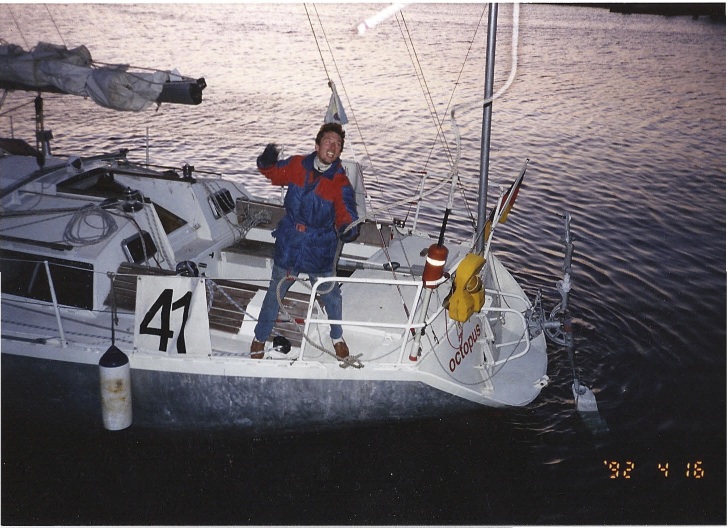 German circumnavigators Astrid and Wilhelm Greiff, long-standing friends of Jimmy Cornell and representatives of World Cruising, completed their lap around the world some 20 years ago in a French Via 42, a boat whose builder subsequently ran into financial difficulties when its great attention to detail turned out to be unprofitable. Via centreboarders, with their skeg- and heel-mounted rudder, are today a highly sought-after rarity.
German circumnavigators Astrid and Wilhelm Greiff, long-standing friends of Jimmy Cornell and representatives of World Cruising, completed their lap around the world some 20 years ago in a French Via 42, a boat whose builder subsequently ran into financial difficulties when its great attention to detail turned out to be unprofitable. Via centreboarders, with their skeg- and heel-mounted rudder, are today a highly sought-after rarity.
One of the peculiar features of the aluminium boat-building scene is that aluminium boats very seldom make an appearance at boat shows. Why should they? It’s not as if the yards are short of orders… While this alone speaks volumes, it is also probably worth mentioning again that the cost of attending boat shows, like other marketing and sales costs, passes straight into the purchase price. Hence a manufacturer that can market its yachts effectively without having to stump up for boat shows can put more of its revenue into delivering a high-quality product. Painful it may be to admit, but logically it makes perfect sense.
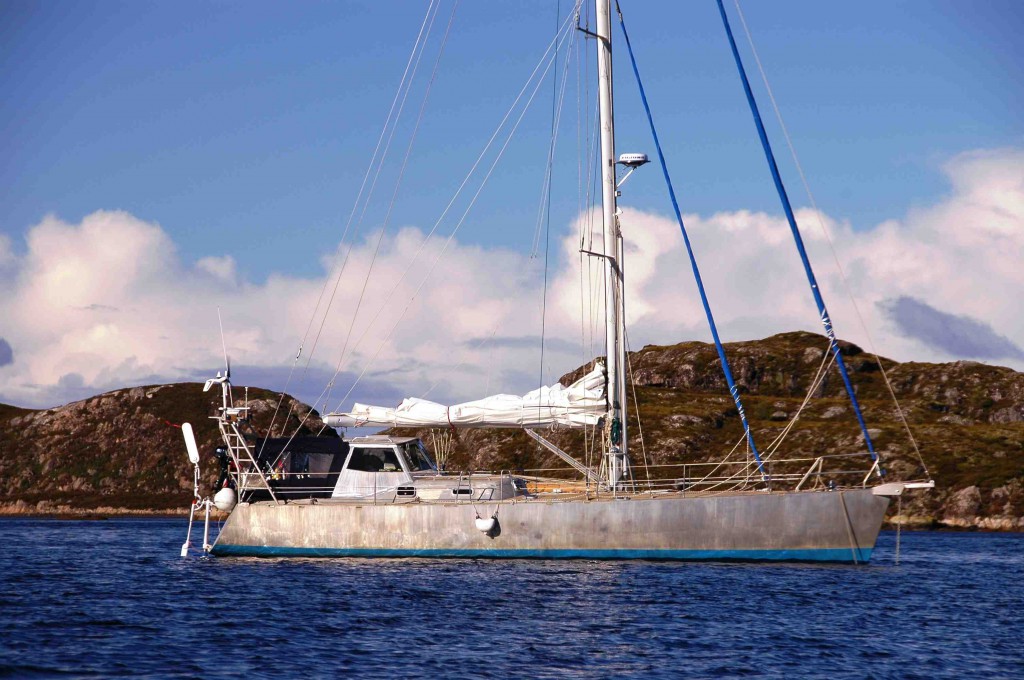 NORDSEE yachts, all of them built by Dübbel & Jesse on the island of Norderney on the German North Sea coast, enjoy legendary status in Germany and are highly prized in the second-hand market. Few ever come up for sale, however: once acquired, they tend to become family heirlooms, with successive generations of sailors appreciating their outstanding quality and building a firm conviction that after this, any other boat would be a backwards step. Unfortunately the production of Nordsee yachts ended with the tragic death of one of the yard’s proprietors, Herr Dübbel, and today BENJAMINS in Emden, close to the Dutch border, is probably one of the few German yards still building aluminium yachts professionally in any significant numbers. Skorpion yachts from the FELTZ YACHT in Hamburg also have a solid reputation in the bluewater community. Feltz still works in both aluminium and steel, although most of its business in recent years has come from public authorities and the commercial shipping sector.
NORDSEE yachts, all of them built by Dübbel & Jesse on the island of Norderney on the German North Sea coast, enjoy legendary status in Germany and are highly prized in the second-hand market. Few ever come up for sale, however: once acquired, they tend to become family heirlooms, with successive generations of sailors appreciating their outstanding quality and building a firm conviction that after this, any other boat would be a backwards step. Unfortunately the production of Nordsee yachts ended with the tragic death of one of the yard’s proprietors, Herr Dübbel, and today BENJAMINS in Emden, close to the Dutch border, is probably one of the few German yards still building aluminium yachts professionally in any significant numbers. Skorpion yachts from the FELTZ YACHT in Hamburg also have a solid reputation in the bluewater community. Feltz still works in both aluminium and steel, although most of its business in recent years has come from public authorities and the commercial shipping sector.
The way that aluminium and steel boat-building has fallen out of favour in Germany cannot be explained by any lack of demand, but it certainly does take entrepreneurial vision to guide the development of a yard in such a way as to permit the production of attractive yachts from good designers using the latest construction methods at a price customers will be willing to pay. The Dutch have a thriving and technologically advanced boat-building industry capable of fabricating eye-catching vessels at a reasonable price, so it is no wonder we immediately look to our tulip-raising neighbours whenever the conversation turns to metal yachts. Visit Kooi in Makkum or Koopmans in Sneek and see just how professionally they go about their work and I think you will immediately appreciate why those who sail them have no hesitation in giving these wonderfully robust yachts their full trust right from day one.
Peter Foerthmann
ññ
SV Snowgoose, Walter Stegmüller GER
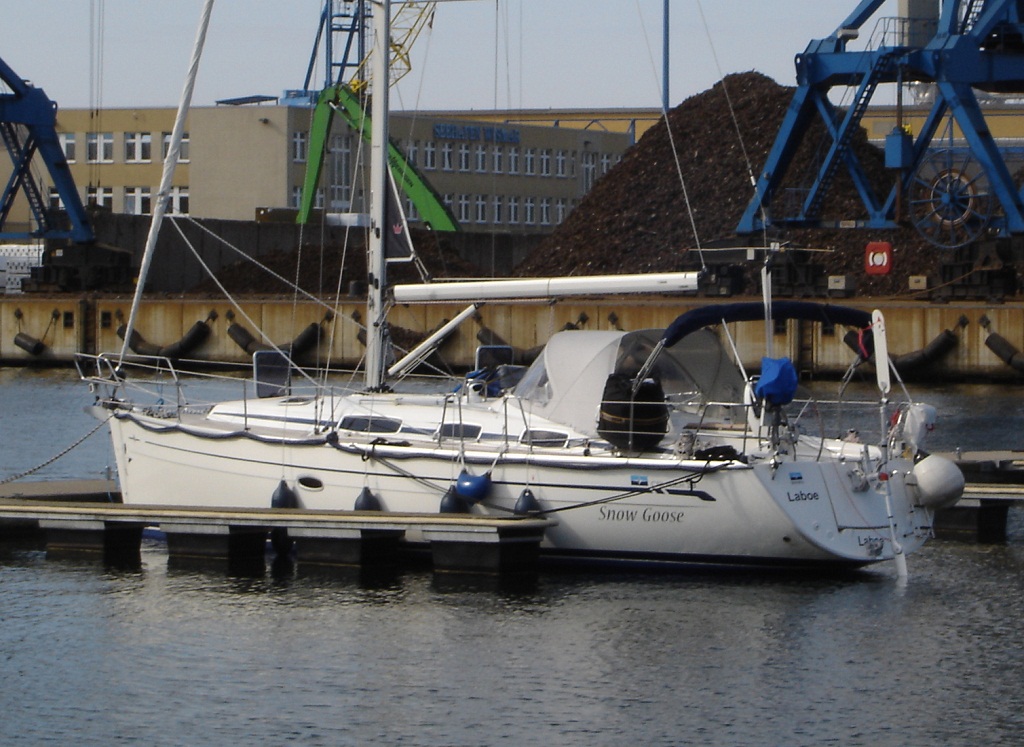 Hallo Herr Förthmann,
Hallo Herr Förthmann,
Grüsse aus Stralsund.
Windpilot hat sich super bewährt.
Bei der Überfahrt von Fehmarn nach Wismar hatten wir sehr böigen Wind (6-7) und Wellen (ca. 2-3m) von der Seite.
Ich muss sagen, besser steuern hätte ich selbst auch nicht können.
Bei der Nachtfahrt von Warnemünde nach Stralsund war unser „Jürgen“ (Windpilot) 10 Stunden ohne Korrektur am steuern –einfach super !!!
Wo ich noch Probleme habe ist bei sehr schwachem achterlichem Wind. Ich schaffe es teilweise nicht eine Einstellung hinzubekommen, um einen stabilen Kurz zu bekommen. (gibt es hier einen Trick?)
Können sie mir sagen, wieviel Wind der Windpilot mindestens braucht, um eine stabile Funktion zu erhalten?
Im Anhang noch Bilder der Snow Goose + endgültige Befestigung der Halterung.
LG
Walter Stegmüller
Hier geht´s zum blog
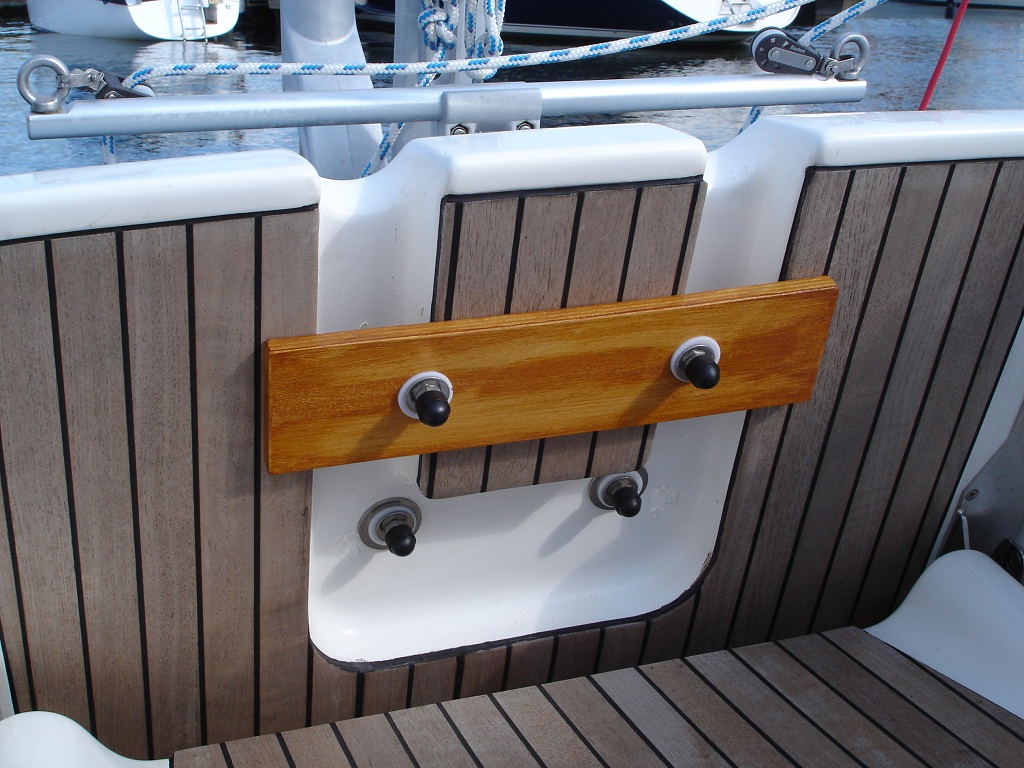
Moin nach Stralsund, und besten Dank fuer die Fotos sowie den Bericht.
Leichtwindsensibilitaet bekommen wir gemeinsam auch noch hin: schlage vor, Sie arrangieren mal die Leinenuebertragung und machen Fotos von achtern bis zum Rad, dann bin ich quasi an Bord bei Ihnen…und kann besser beraten.
Beste Gruesse von der Schlei…
Peter Foerthmann
SV Nele, Eva+Horst Bressel GER and Chico the tiger
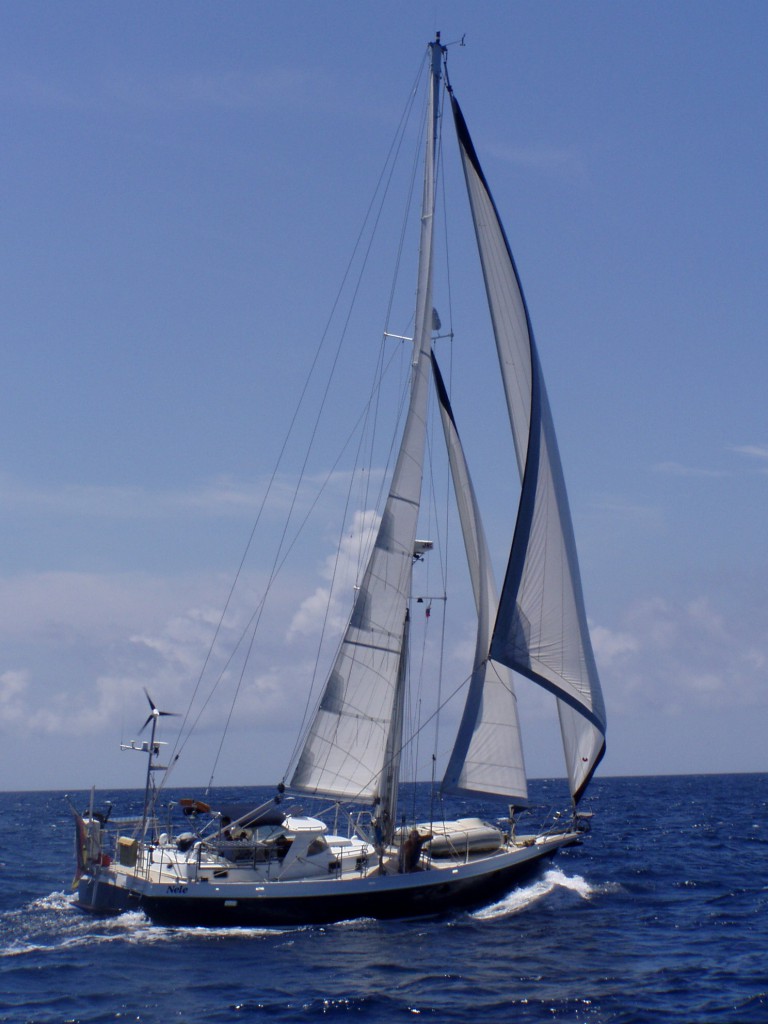
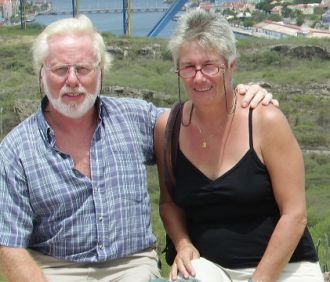 LIveaboards since now 11 years Eva and Horst are currently in Sint Maarten Ned. Ant. After completion of a circumnavigation on their previous 30ft Najade SV Joshua in the eighties, they made a total refit of the same old boat in Mainz Germany to start again westwards. They changed boat some years ago and are living on their current VANGUARD 1350. Horst is specialist in watermaker and official rep. of WaterCraft Watermakers
LIveaboards since now 11 years Eva and Horst are currently in Sint Maarten Ned. Ant. After completion of a circumnavigation on their previous 30ft Najade SV Joshua in the eighties, they made a total refit of the same old boat in Mainz Germany to start again westwards. They changed boat some years ago and are living on their current VANGUARD 1350. Horst is specialist in watermaker and official rep. of WaterCraft Watermakers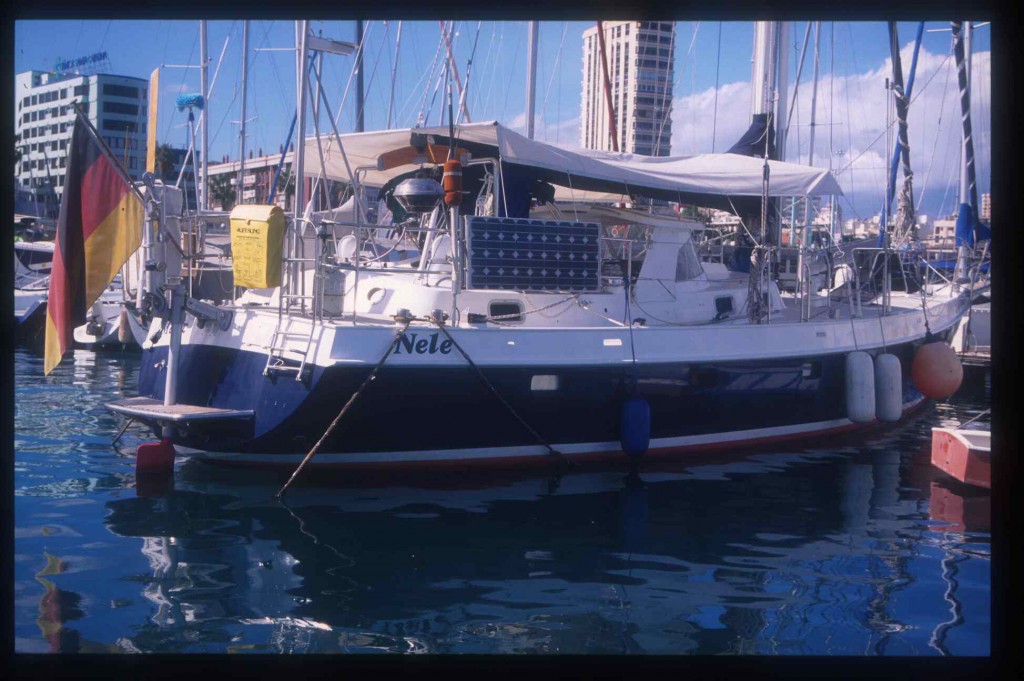
The next generation – Kids in Kisten
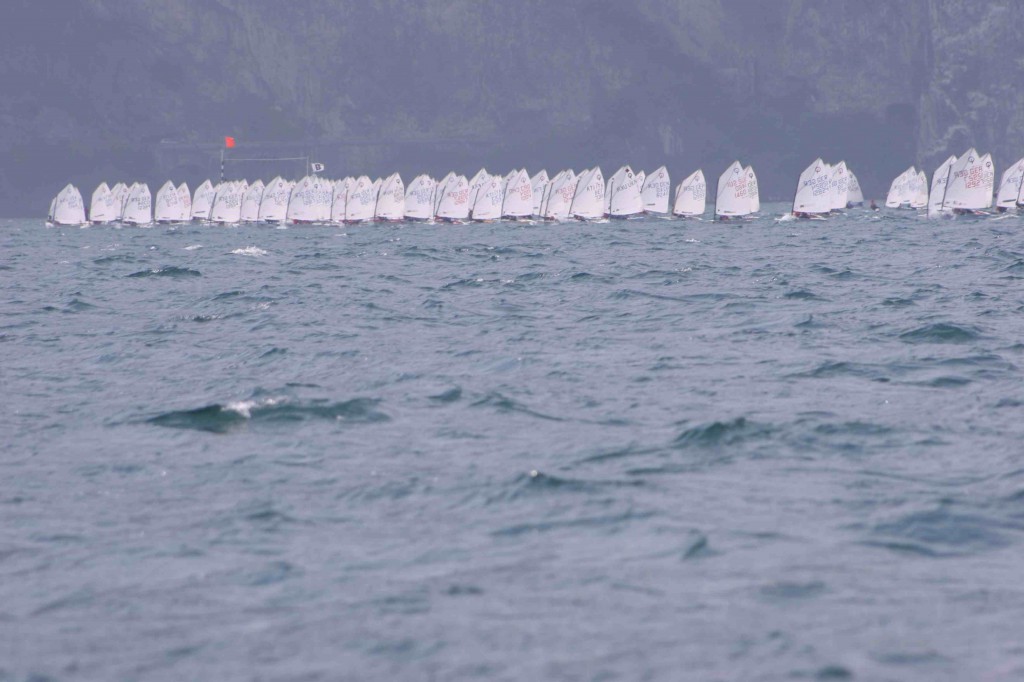 kein Aprilscherz: am 21.April um 12 Uhr fiel der Startschuss zur weltgrössten OPTI Regatta am Gardasee. Ein Ereignis, dass vom veranstaltenden Segelclub FRAGLIA DELLA VELA RIVA bereits zum 29. Mal durchgeführt wurde und rekordverdächtige 855 Teilnehmer am Start fand.
kein Aprilscherz: am 21.April um 12 Uhr fiel der Startschuss zur weltgrössten OPTI Regatta am Gardasee. Ein Ereignis, dass vom veranstaltenden Segelclub FRAGLIA DELLA VELA RIVA bereits zum 29. Mal durchgeführt wurde und rekordverdächtige 855 Teilnehmer am Start fand.
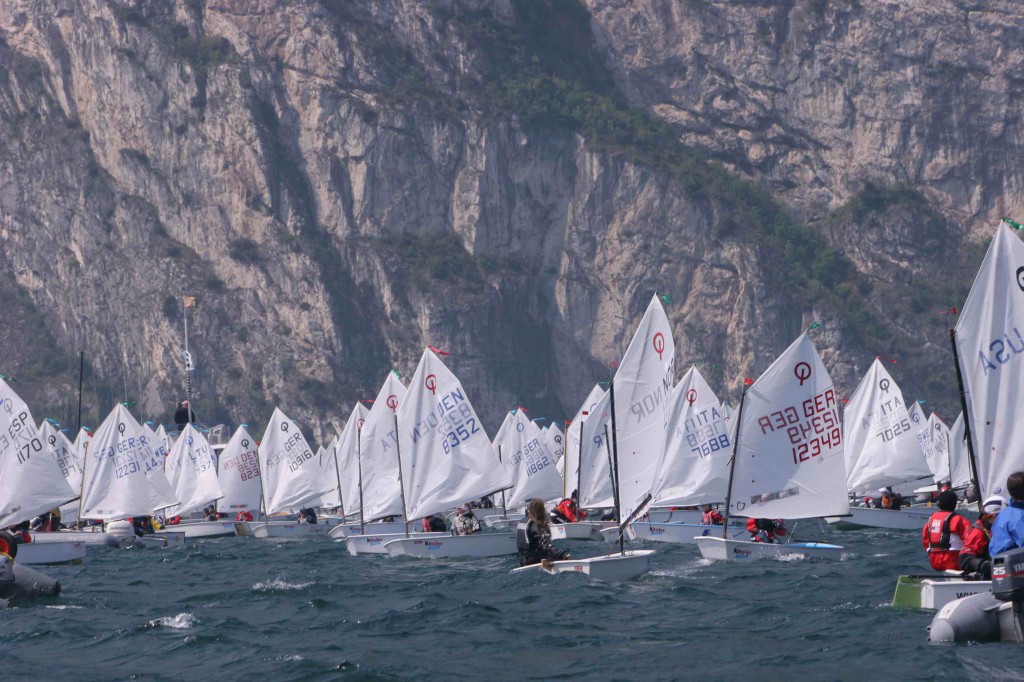 855 segelhungrige Kids aus 40 Nationen, die mit ihren Sponsoren – d.h. Eltern – mit Zelten, Schneckenhäusern, also Wohnmobilen und 350 Schlauchbooten zur lückenlosen Überwachung – und Bergung – angereist waren.
855 segelhungrige Kids aus 40 Nationen, die mit ihren Sponsoren – d.h. Eltern – mit Zelten, Schneckenhäusern, also Wohnmobilen und 350 Schlauchbooten zur lückenlosen Überwachung – und Bergung – angereist waren.
 Mitmachen konnte traditionell jeder, der beim Opti vorn und achtern unterscheiden, schwimmen und beidhändig das Boot beim Segeln in Starkwind mit dem Ösfass lenzen konnte.
Mitmachen konnte traditionell jeder, der beim Opti vorn und achtern unterscheiden, schwimmen und beidhändig das Boot beim Segeln in Starkwind mit dem Ösfass lenzen konnte.
 Toughe Kids, die das ausgehalten haben, denn der Garda See ist ein Revier, dass Nerven und Material fordert und zerfledert, wenn´s nicht akurat auf Stand gewesen ist.
Toughe Kids, die das ausgehalten haben, denn der Garda See ist ein Revier, dass Nerven und Material fordert und zerfledert, wenn´s nicht akurat auf Stand gewesen ist.
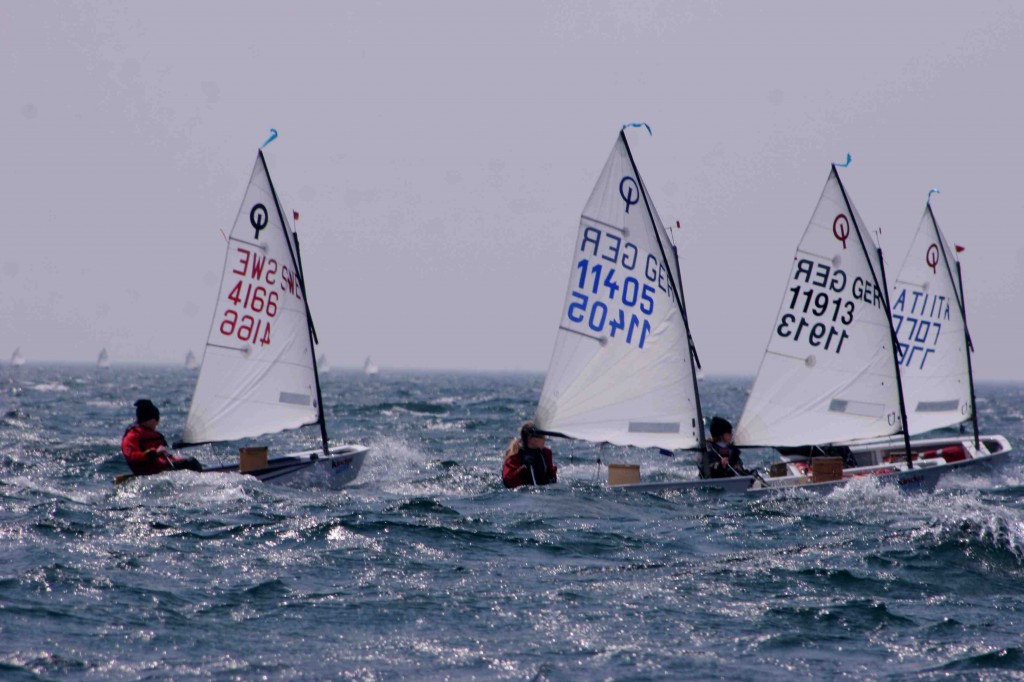 Mit dabei die Essener Segeldame Lisa Mai, Baujahr 1998 und ihrer Yacht Unsinkbar II GER 11405, der sie haarscharf noch nicht entwachsen – die mit ihrer Regierung angereist und auf dem Wasser lückenlos vom elterlichen Schatten begleitet wurde.
Mit dabei die Essener Segeldame Lisa Mai, Baujahr 1998 und ihrer Yacht Unsinkbar II GER 11405, der sie haarscharf noch nicht entwachsen – die mit ihrer Regierung angereist und auf dem Wasser lückenlos vom elterlichen Schatten begleitet wurde.
SV Nostromo, Peter Schwab CH
Dies ist die Geschichte eines Seglers, der seine Windpilot Pacific Anlage zweimal kaufen musste, denn die erste Pacific kam nur bis Las Palmas de Gran Canaria – dann wechselte sie – ungewollt und unfreiwillig – das Schiff – und steuerte hernach ein anderes Schiff – westwärts. Sie war von einem – wohl holländischen – Dieb in Geiselhaft genommen worden, der zuvor monatelang nach einer gebrauchten Occasion Ausschau gehalten – und darüber wohl ungeduldig geworden – und am falschen Schiff dann zugegriffen hatte. Peter Schwab jedenfalls entdeckte nach Rückkehr aus der Heimat sein Schiff zwar vollständig, aber ohne Heckverzierung in der Marina von Las Palmas…. und reklamierte den mangelnden Steuerautomaten, d.h. erhielt Ersatz zum TrostpreisPreis, den er seither Tag und Nacht bewacht – oder anders herum. Peter hat zwischenzeitlich das Revier gewechselt und schwimmt zwischen karibischen Eilanden hin und her – hat stets gute Laune und segelt auf der Erlebnis Wolke….
